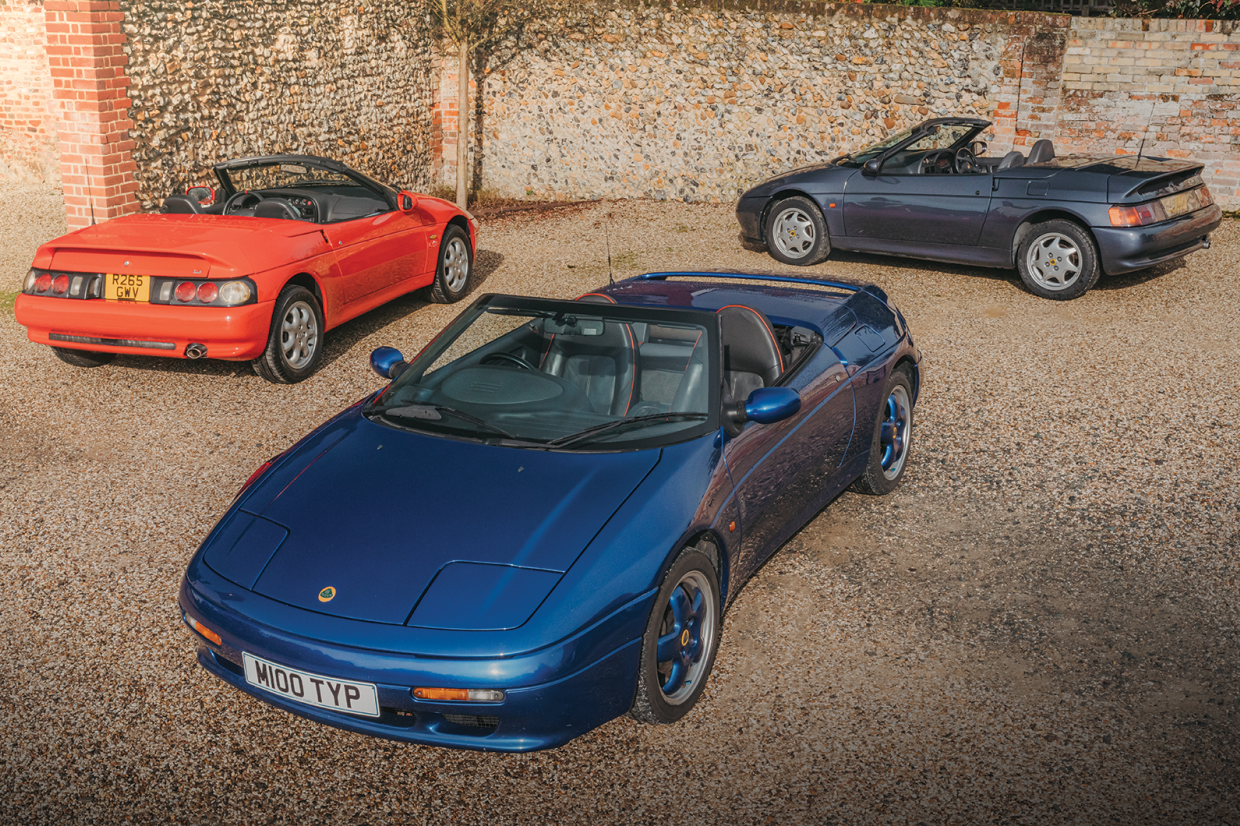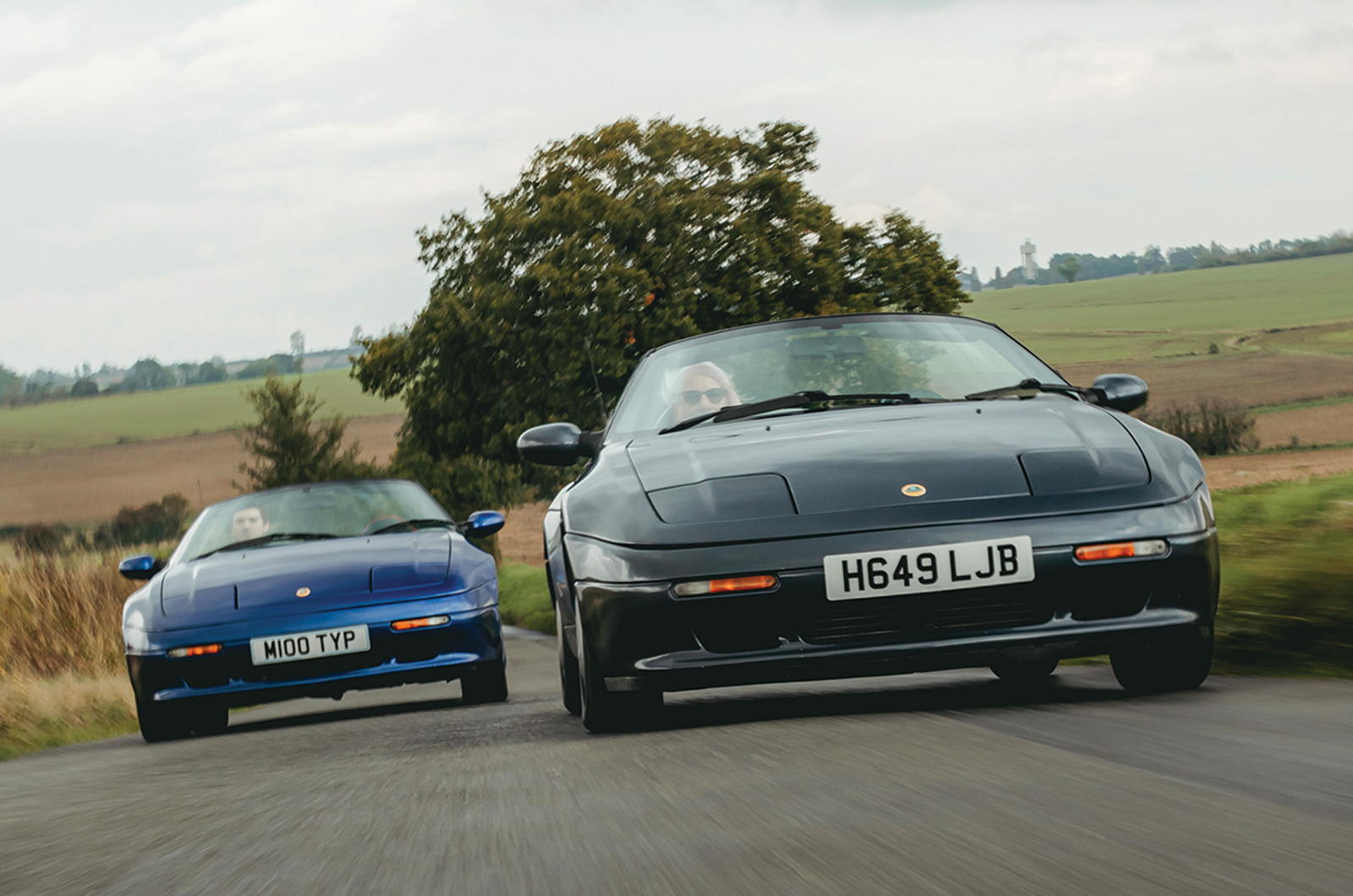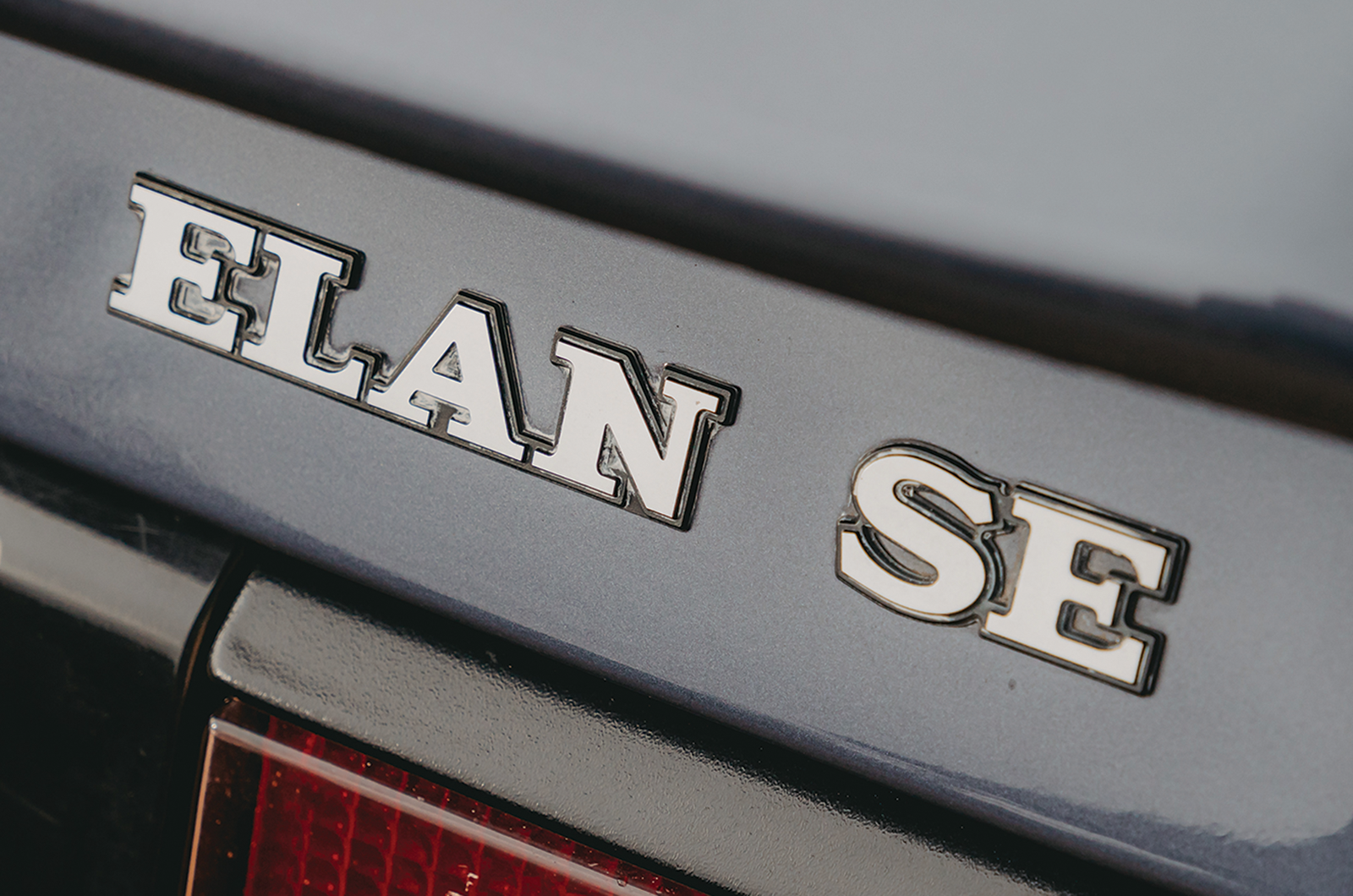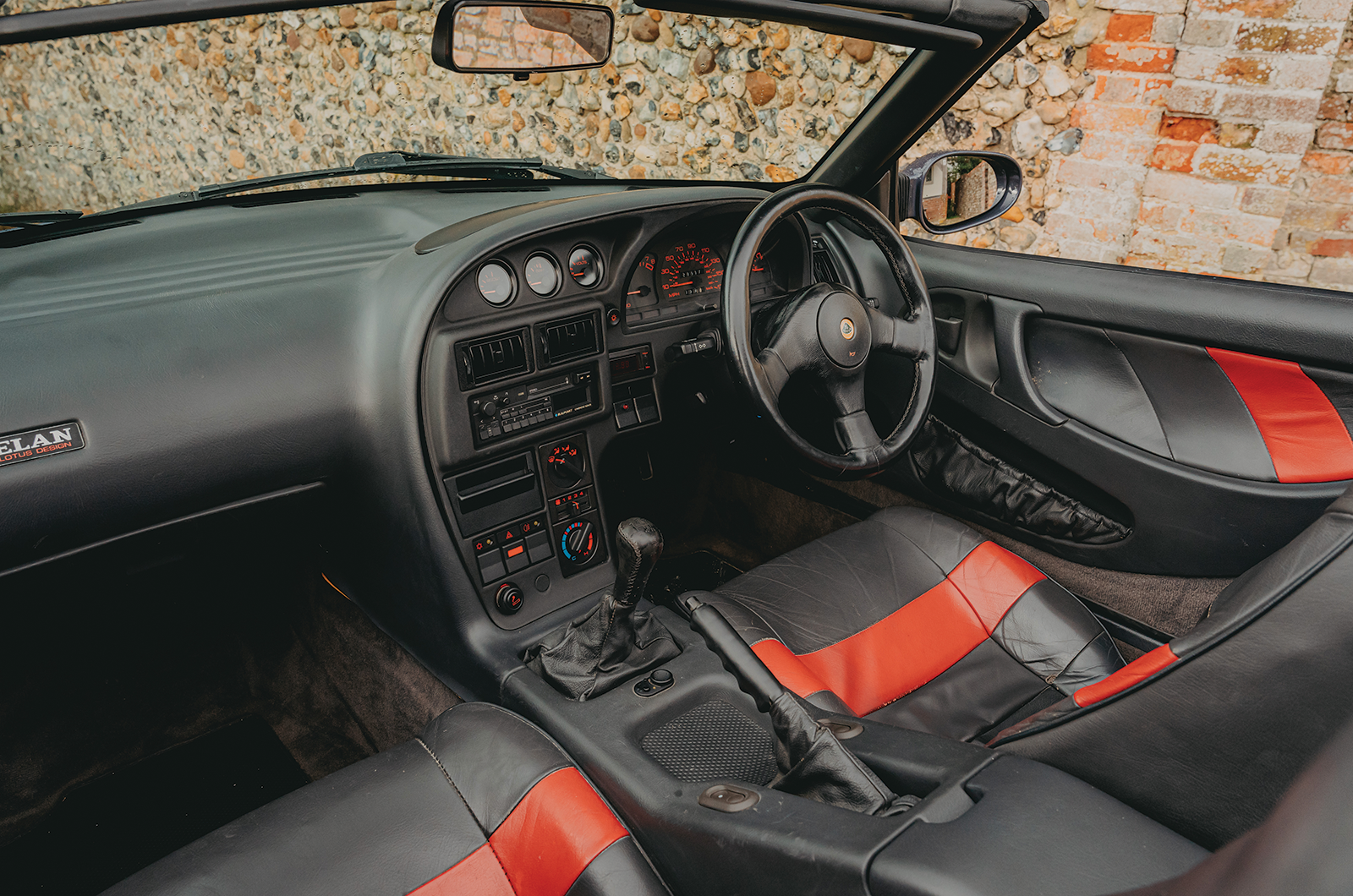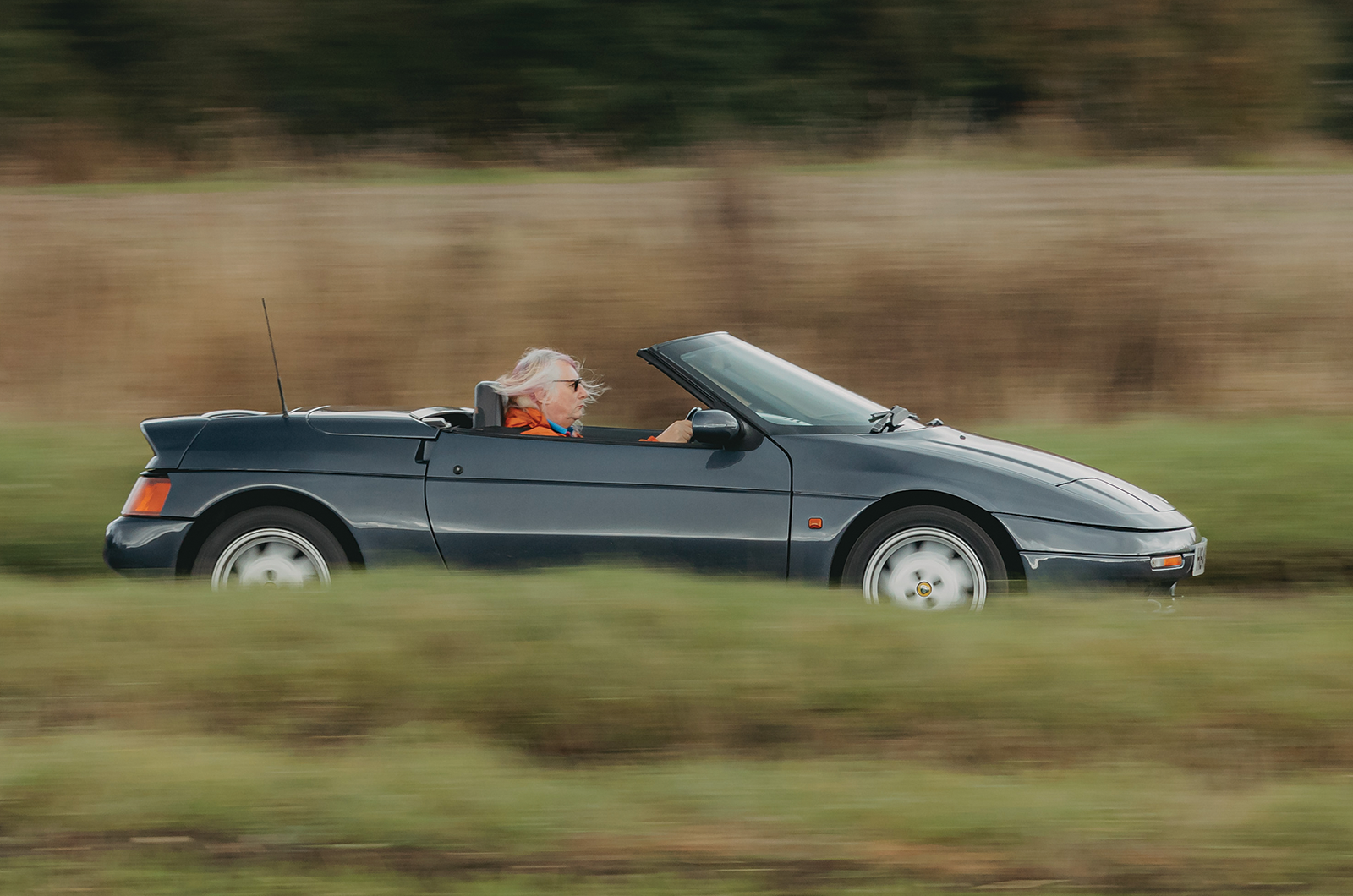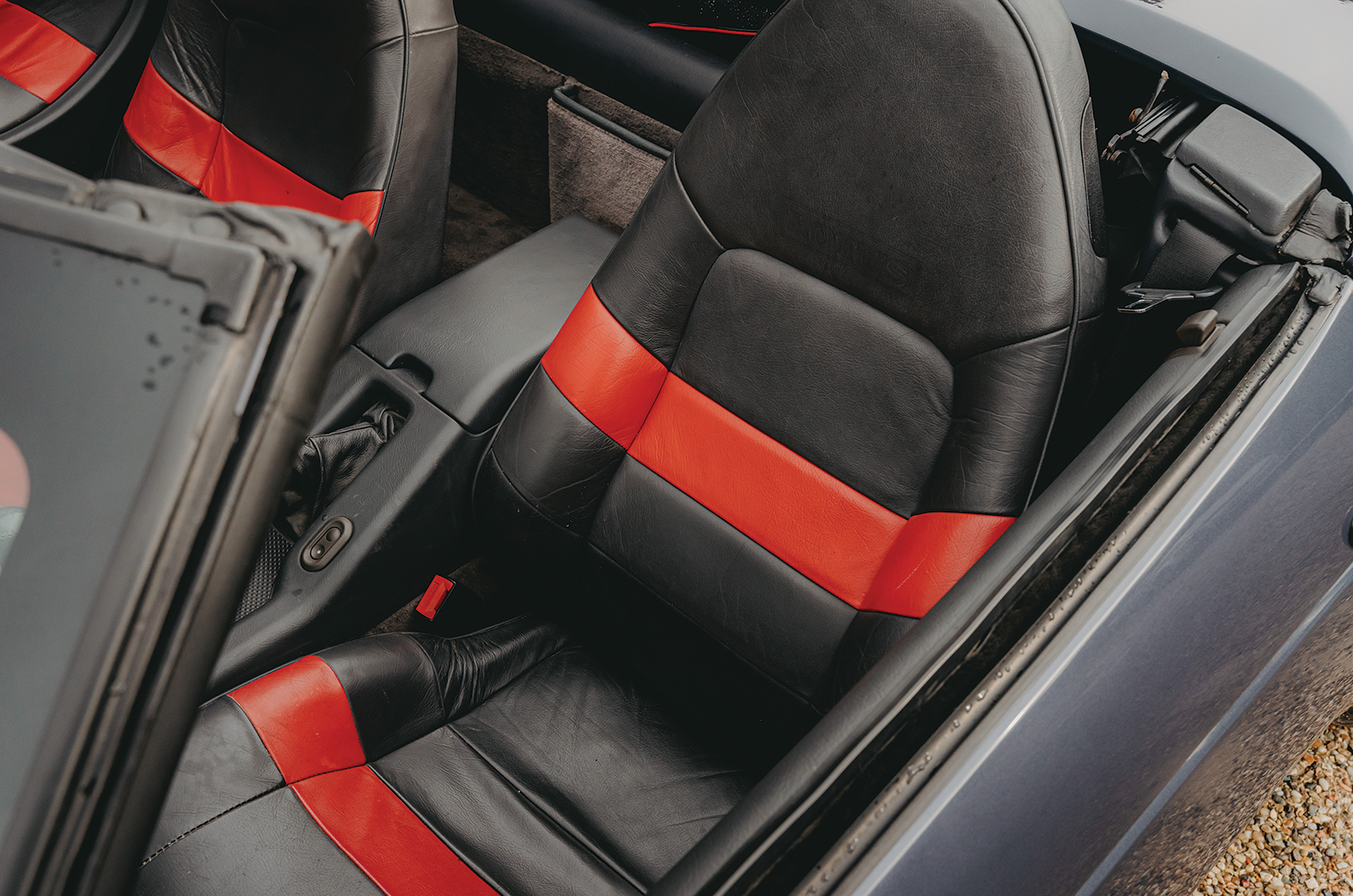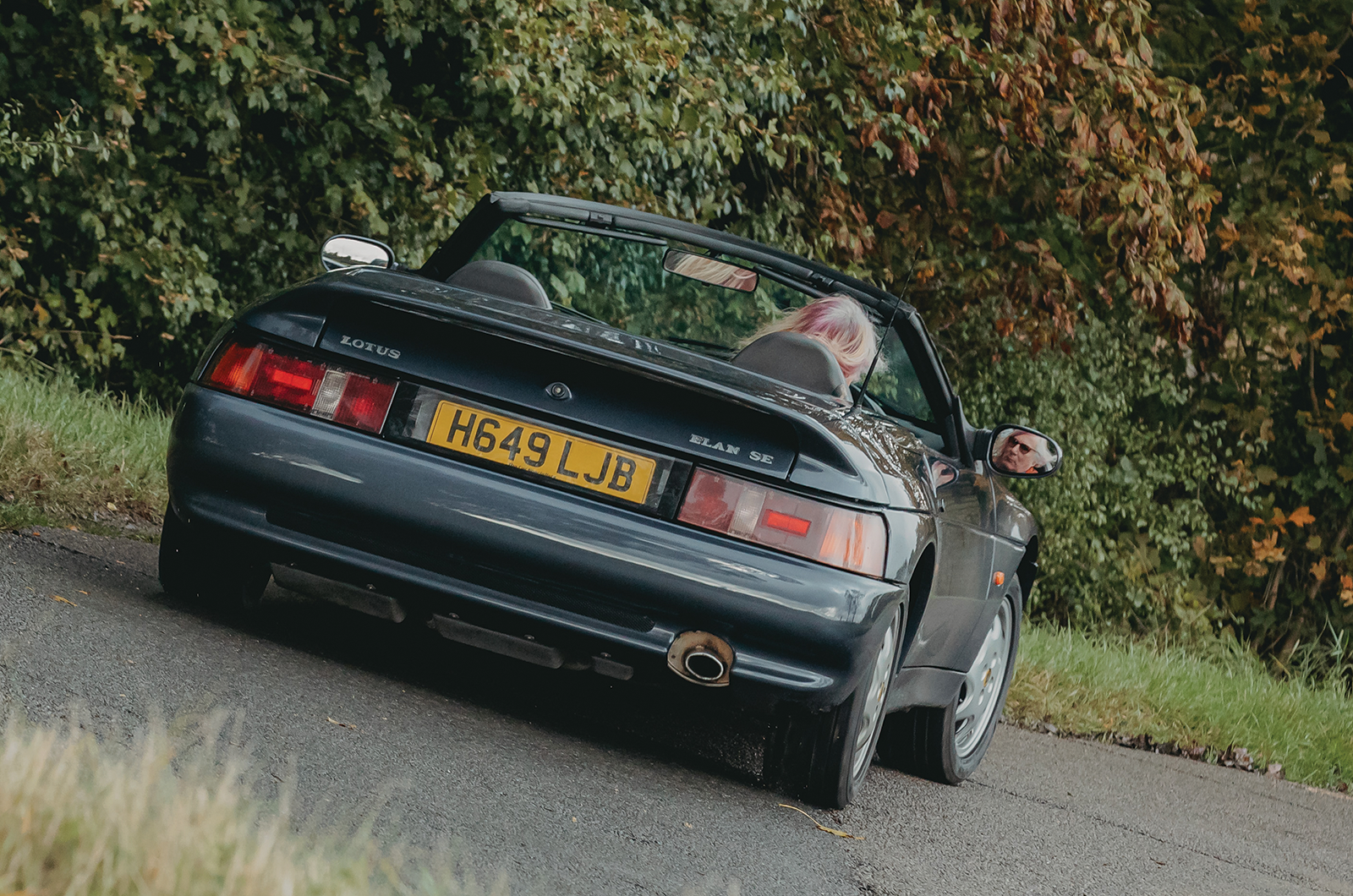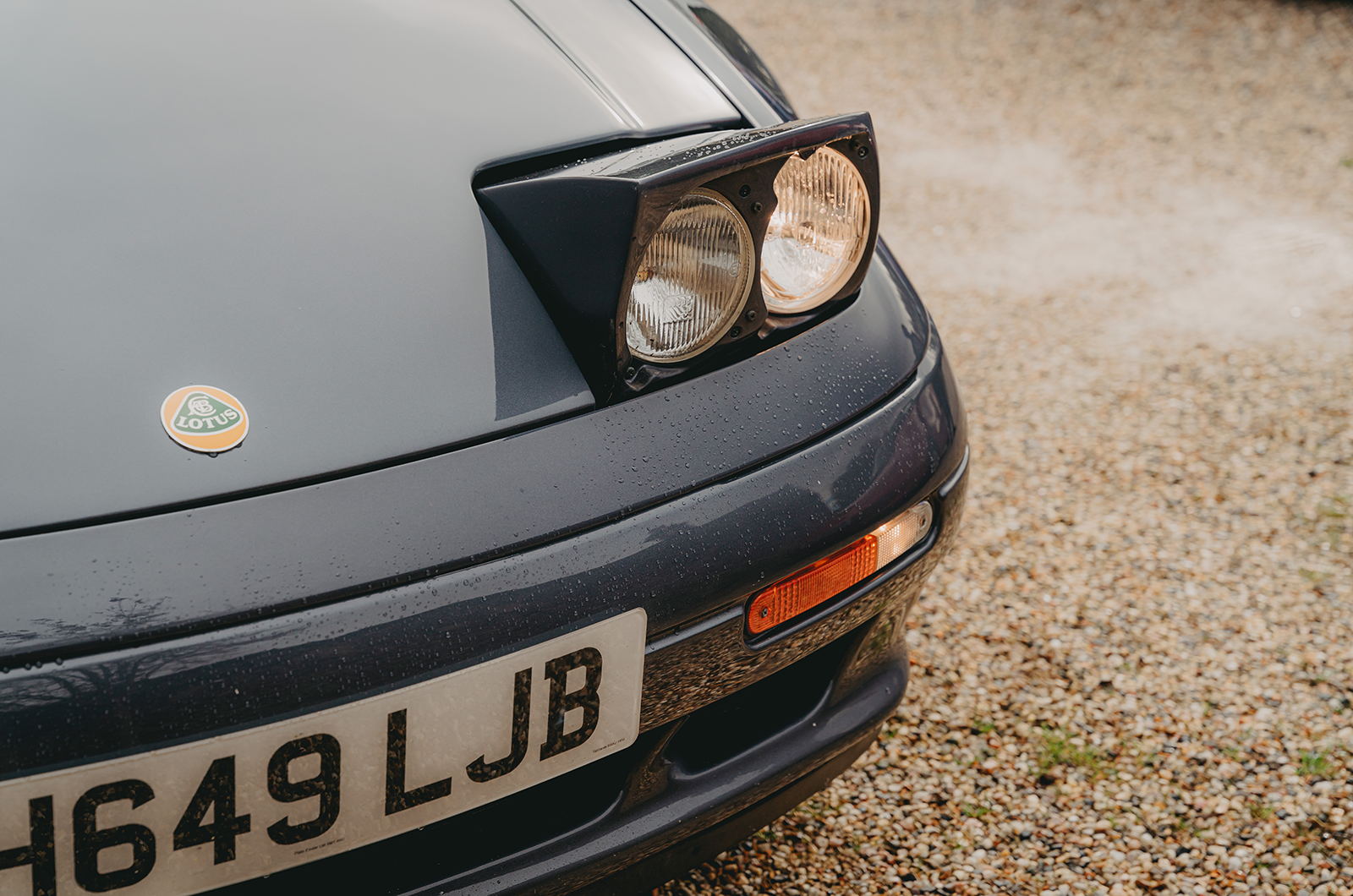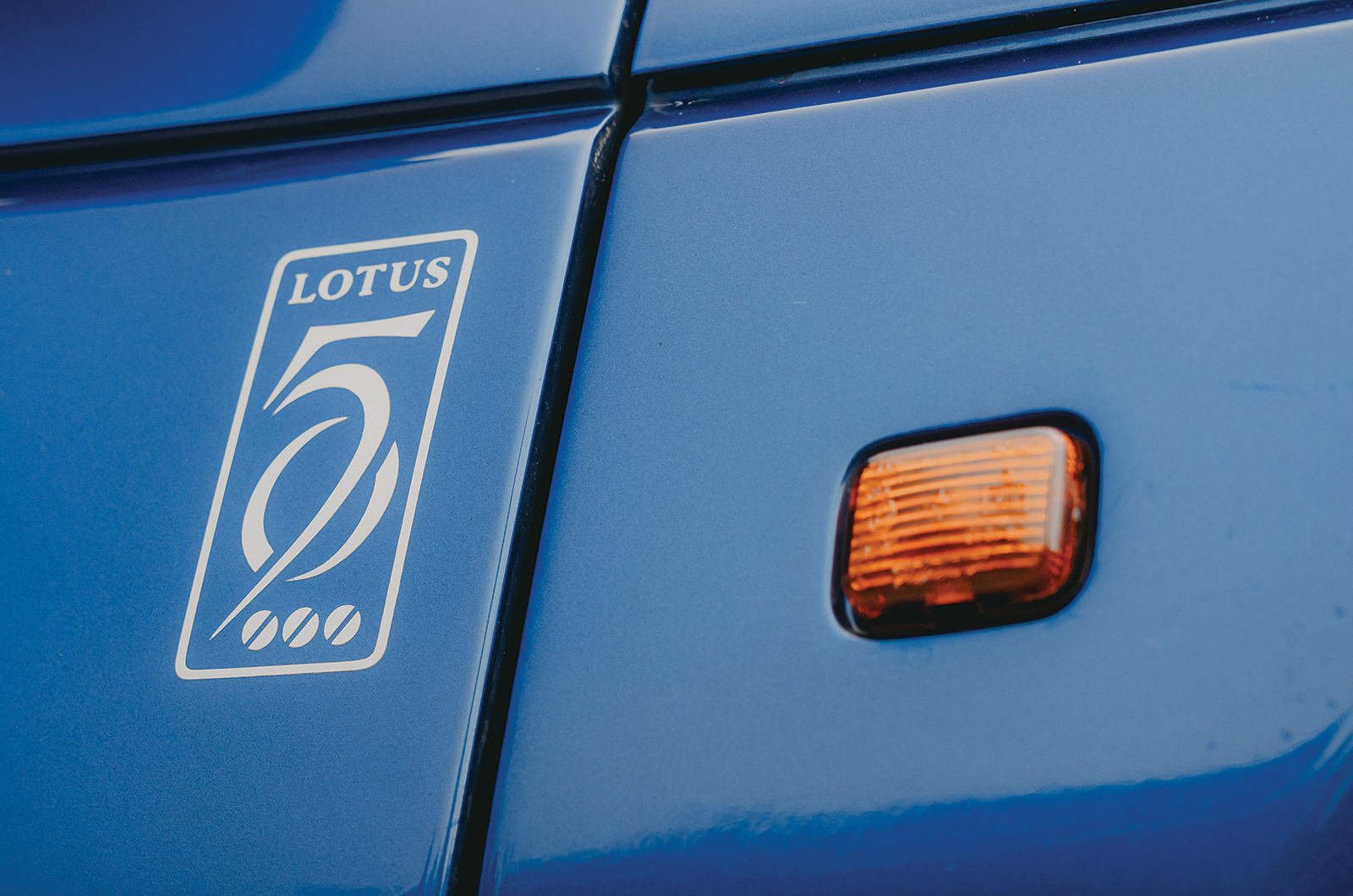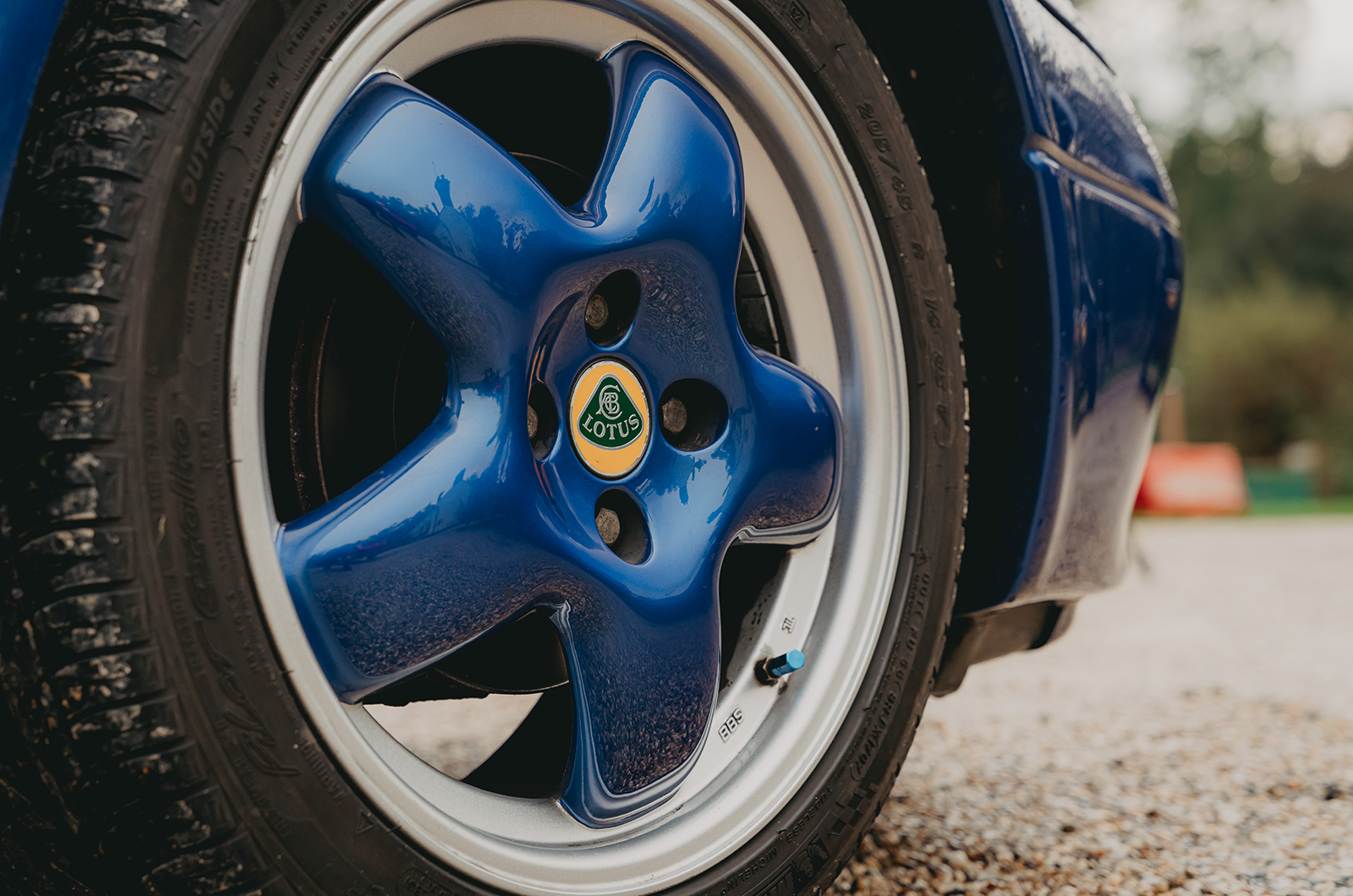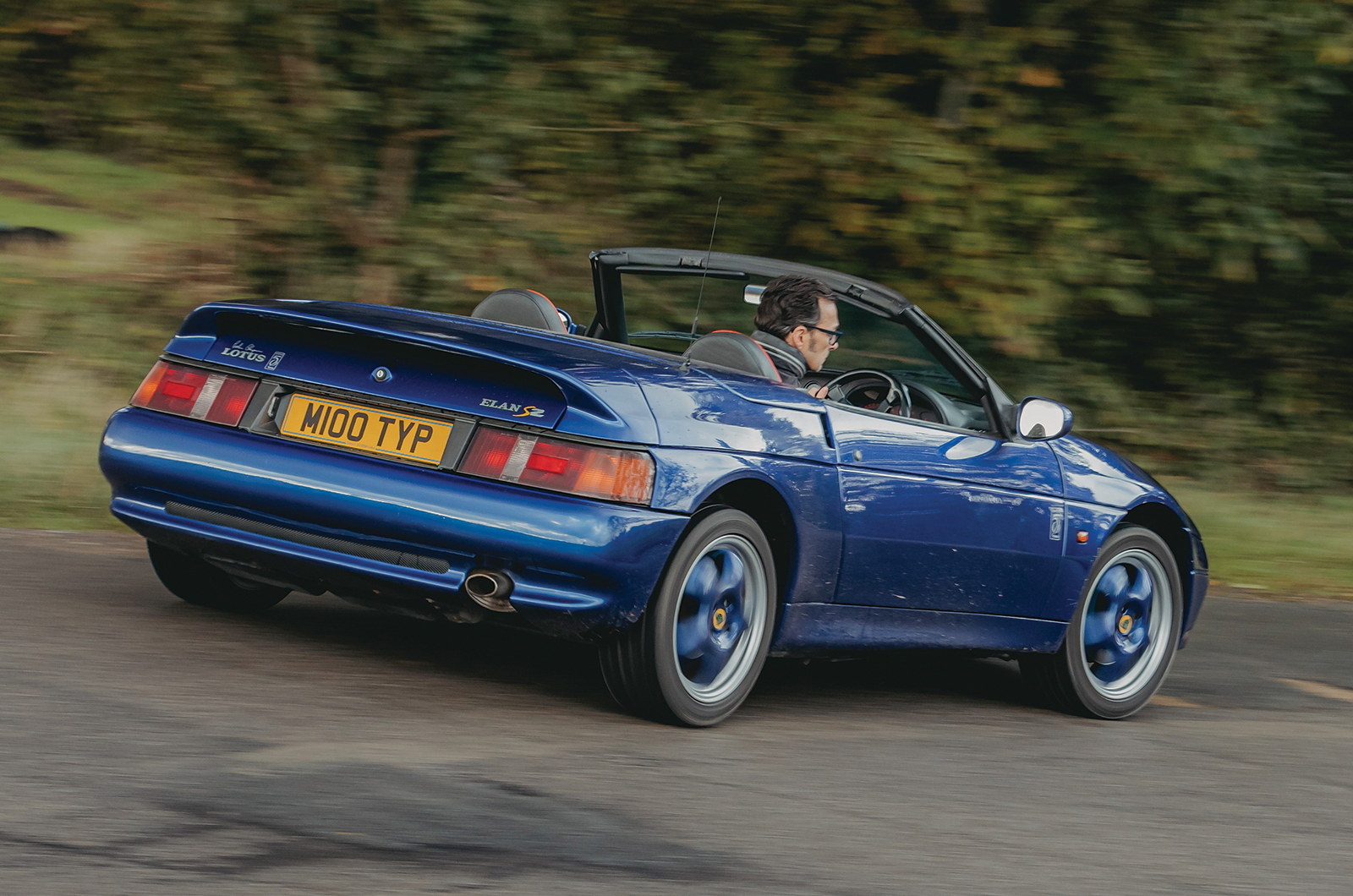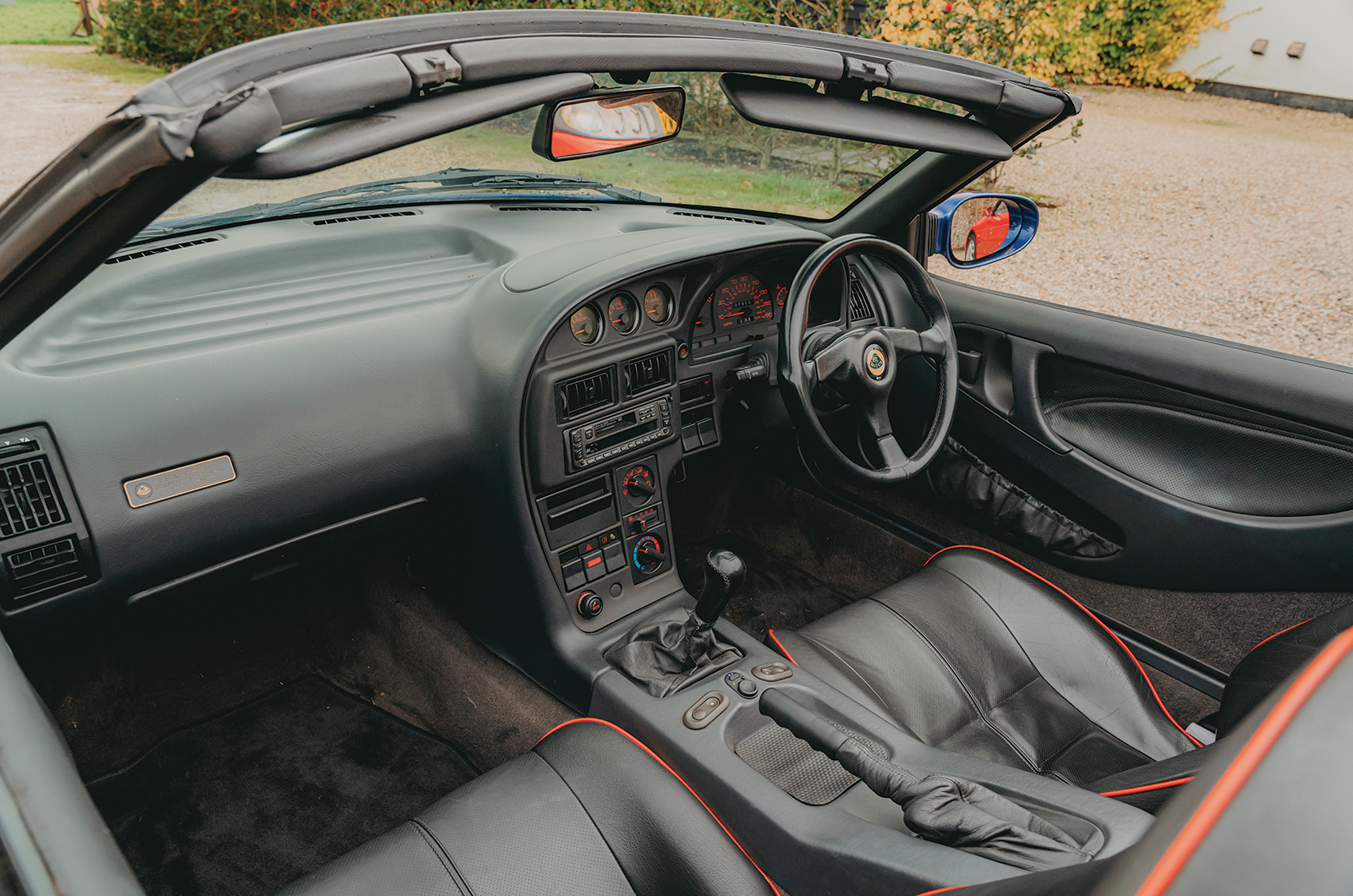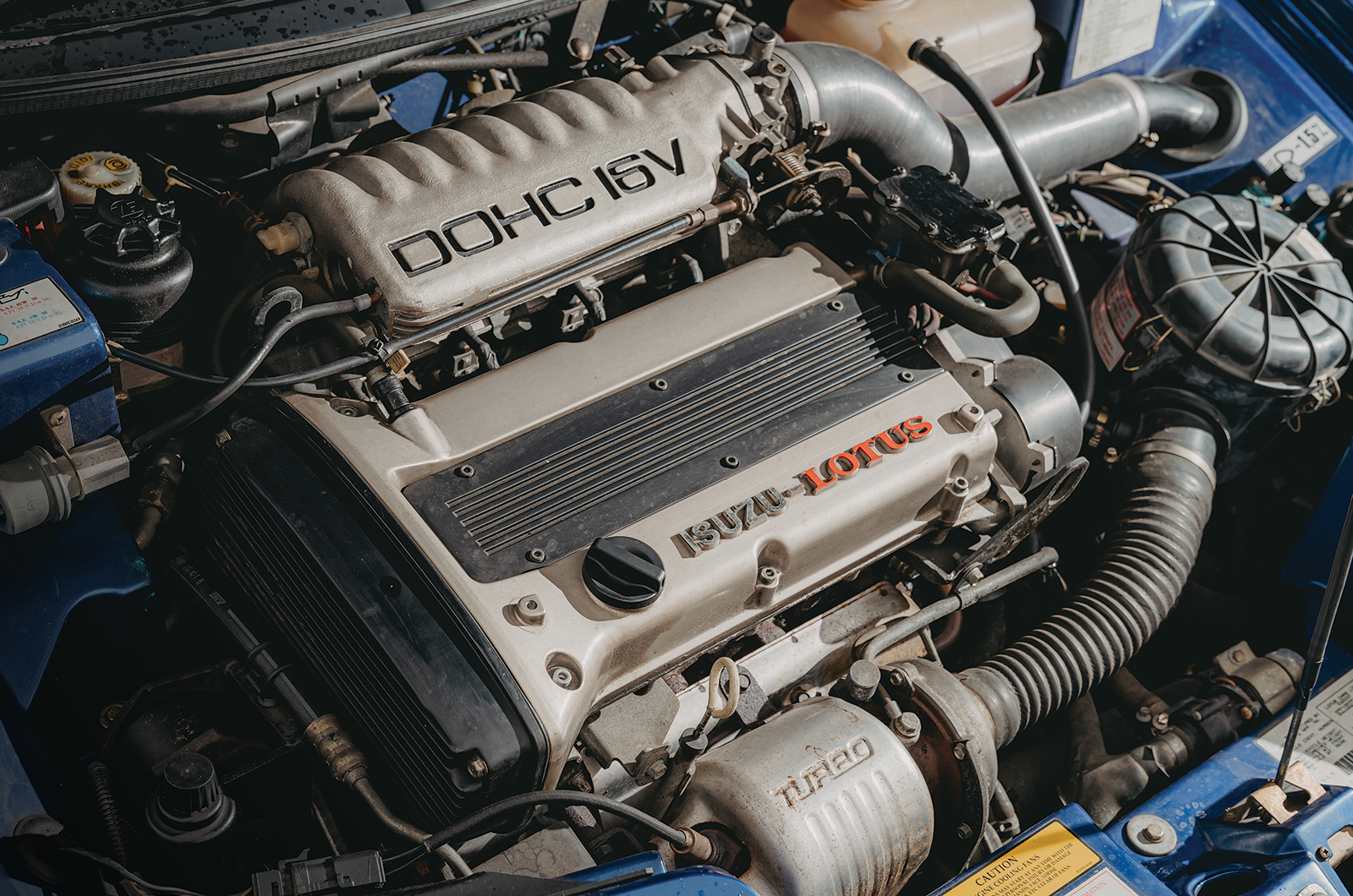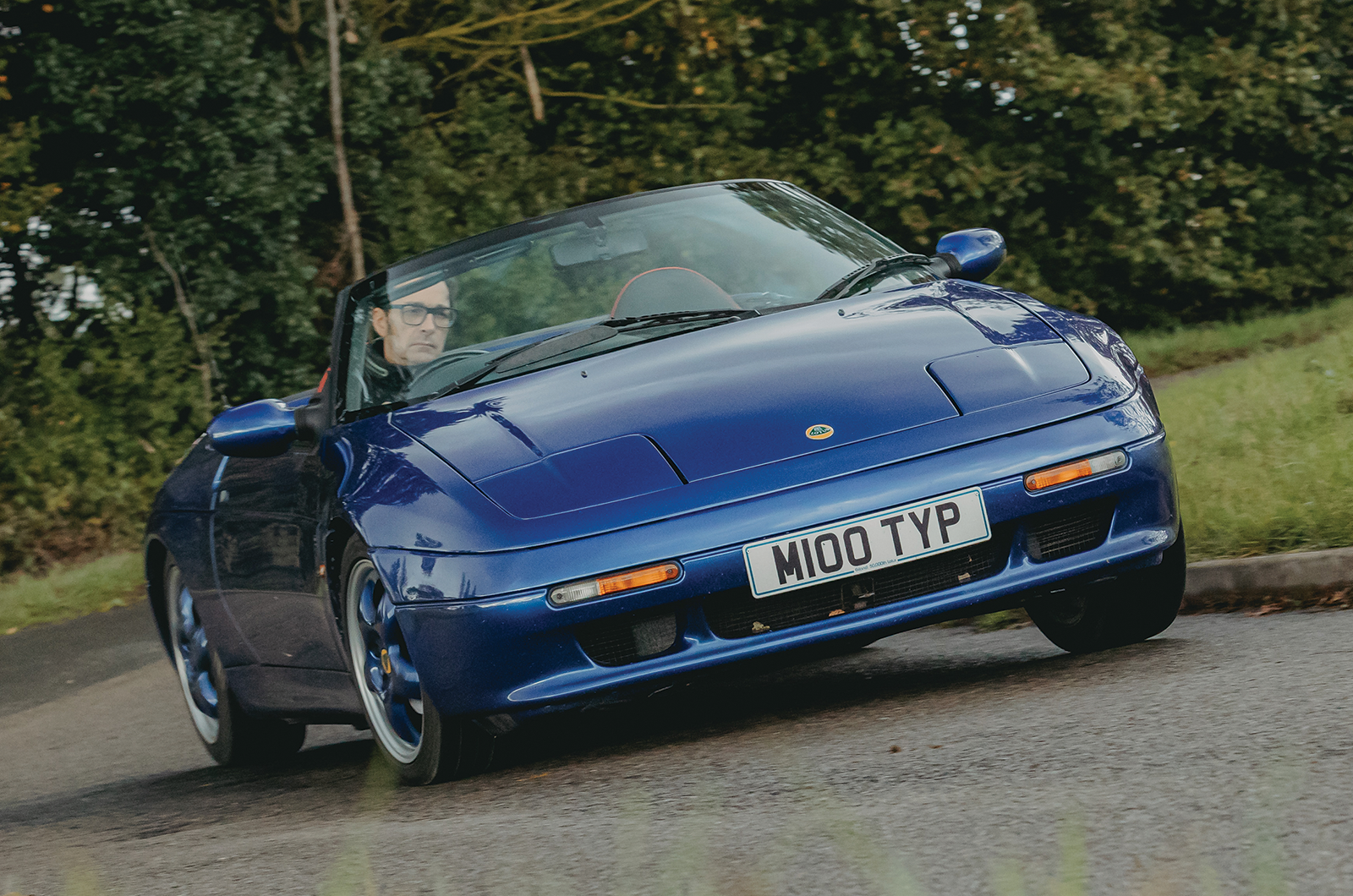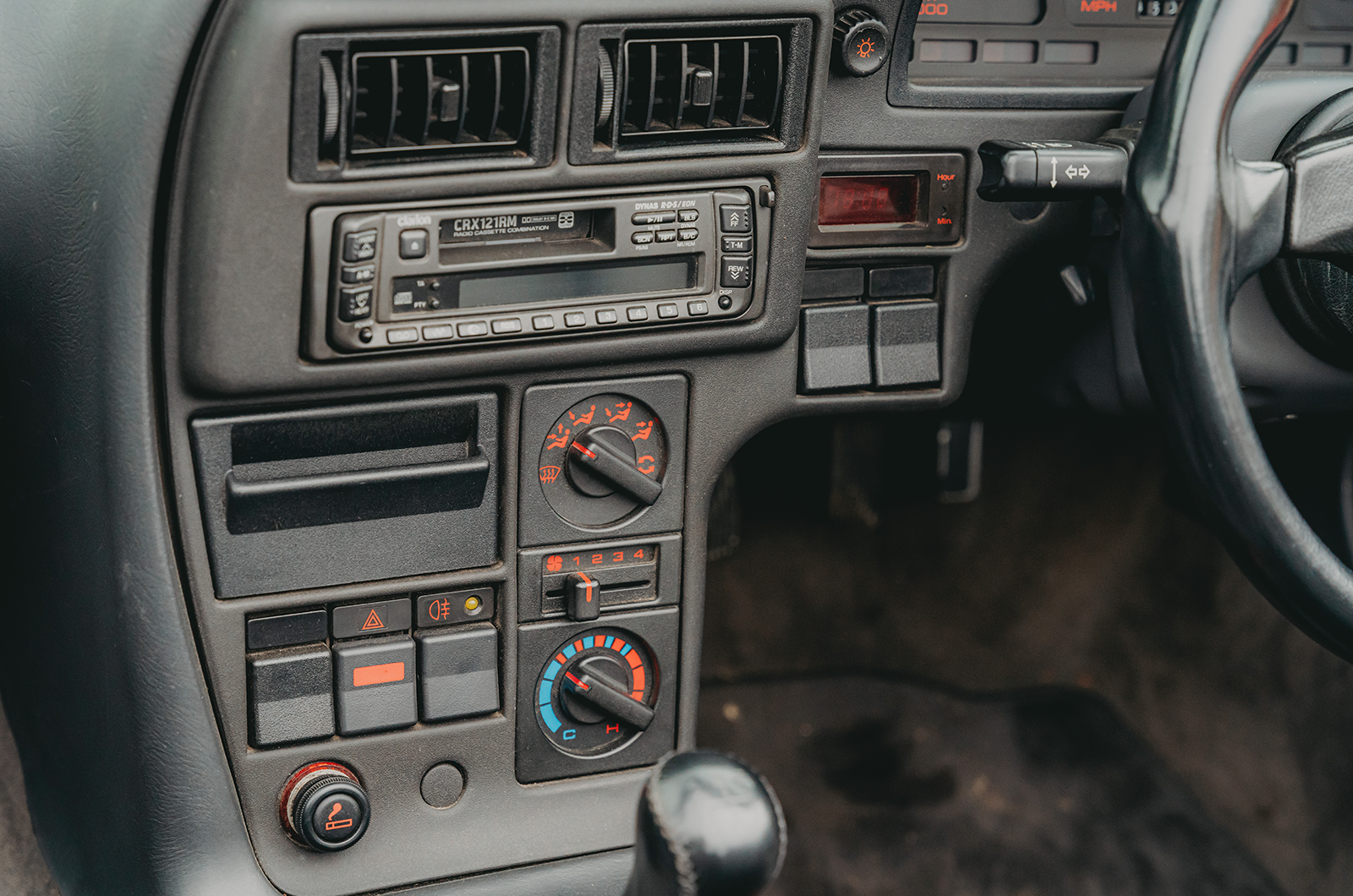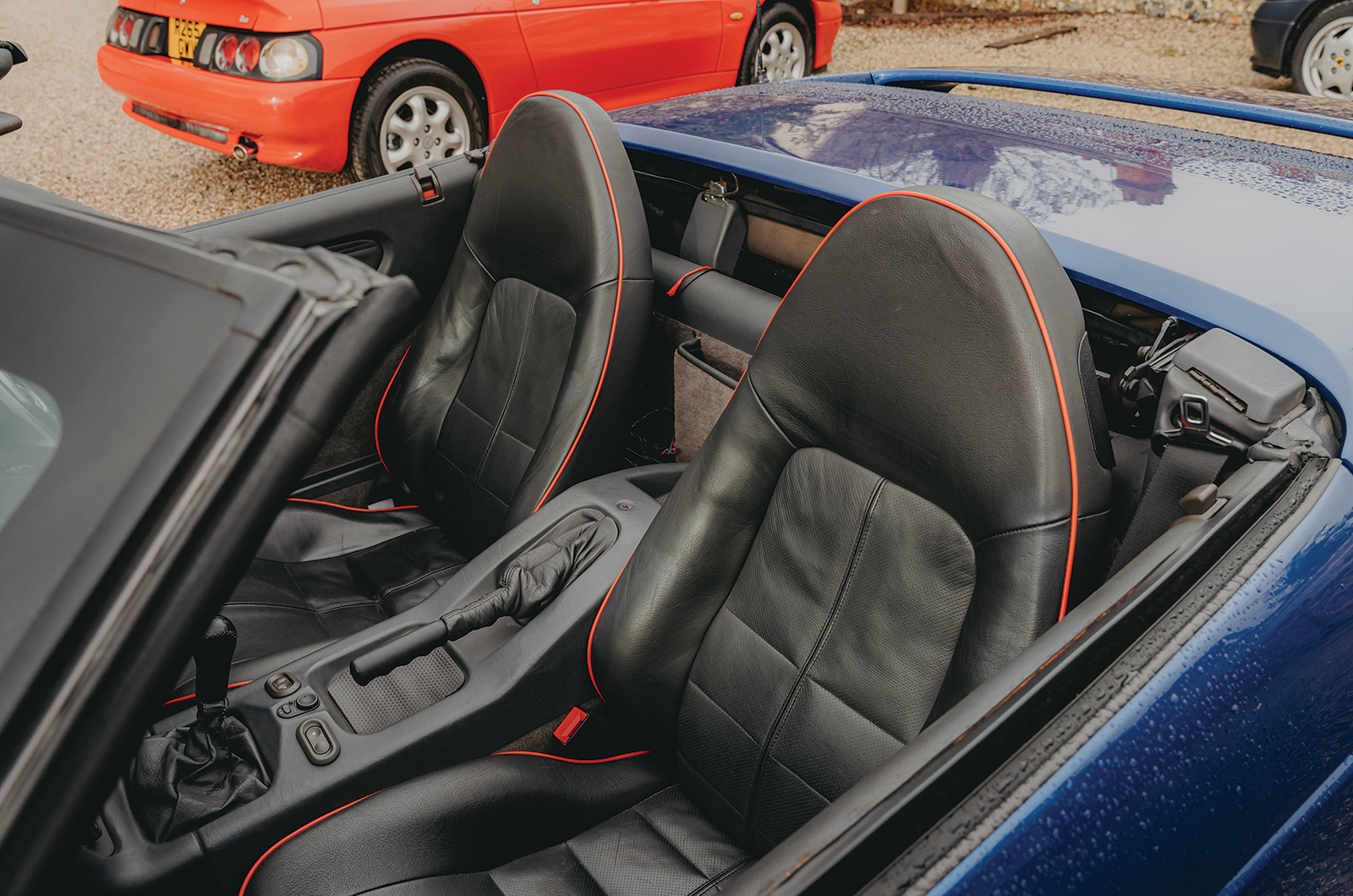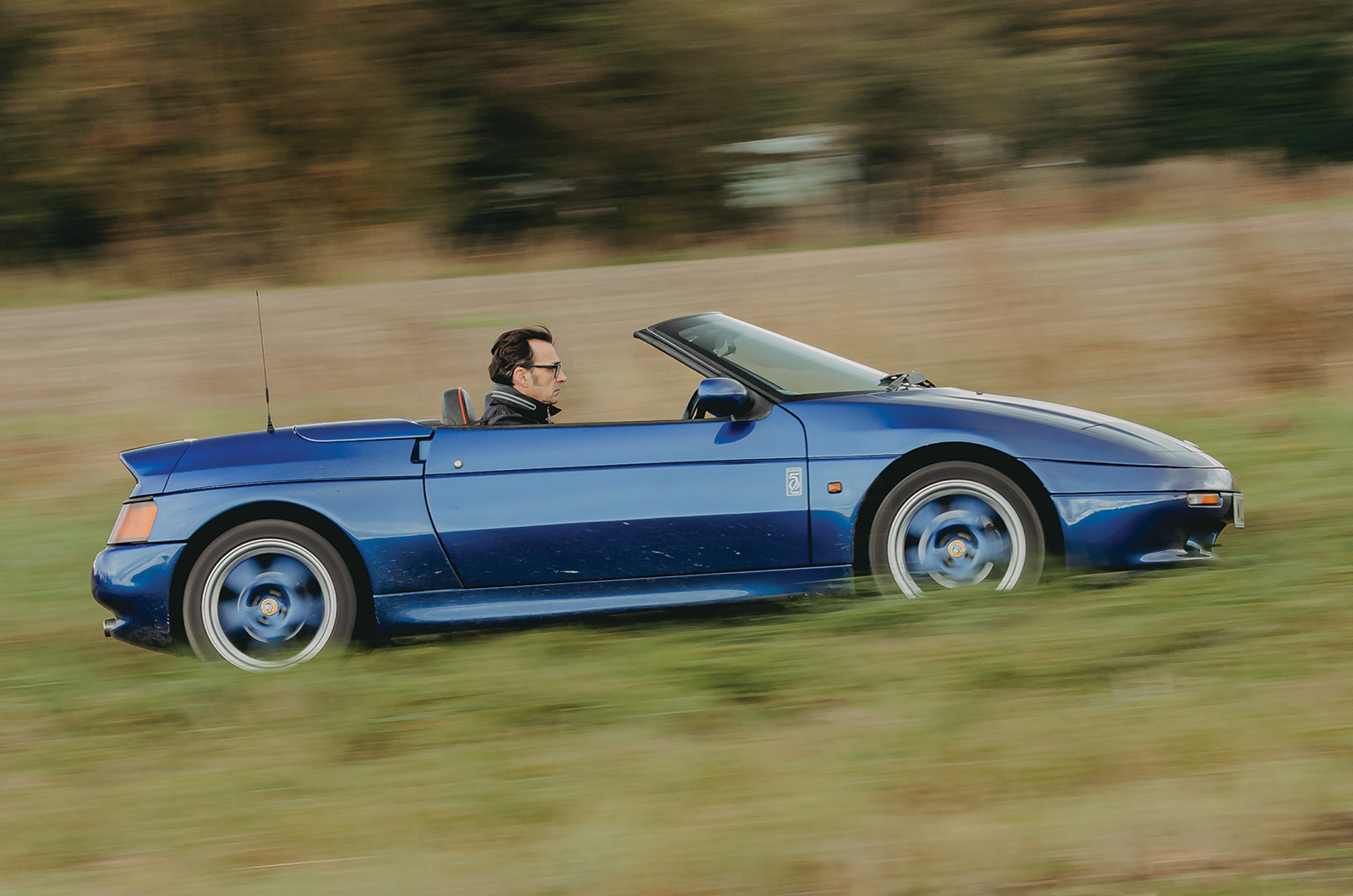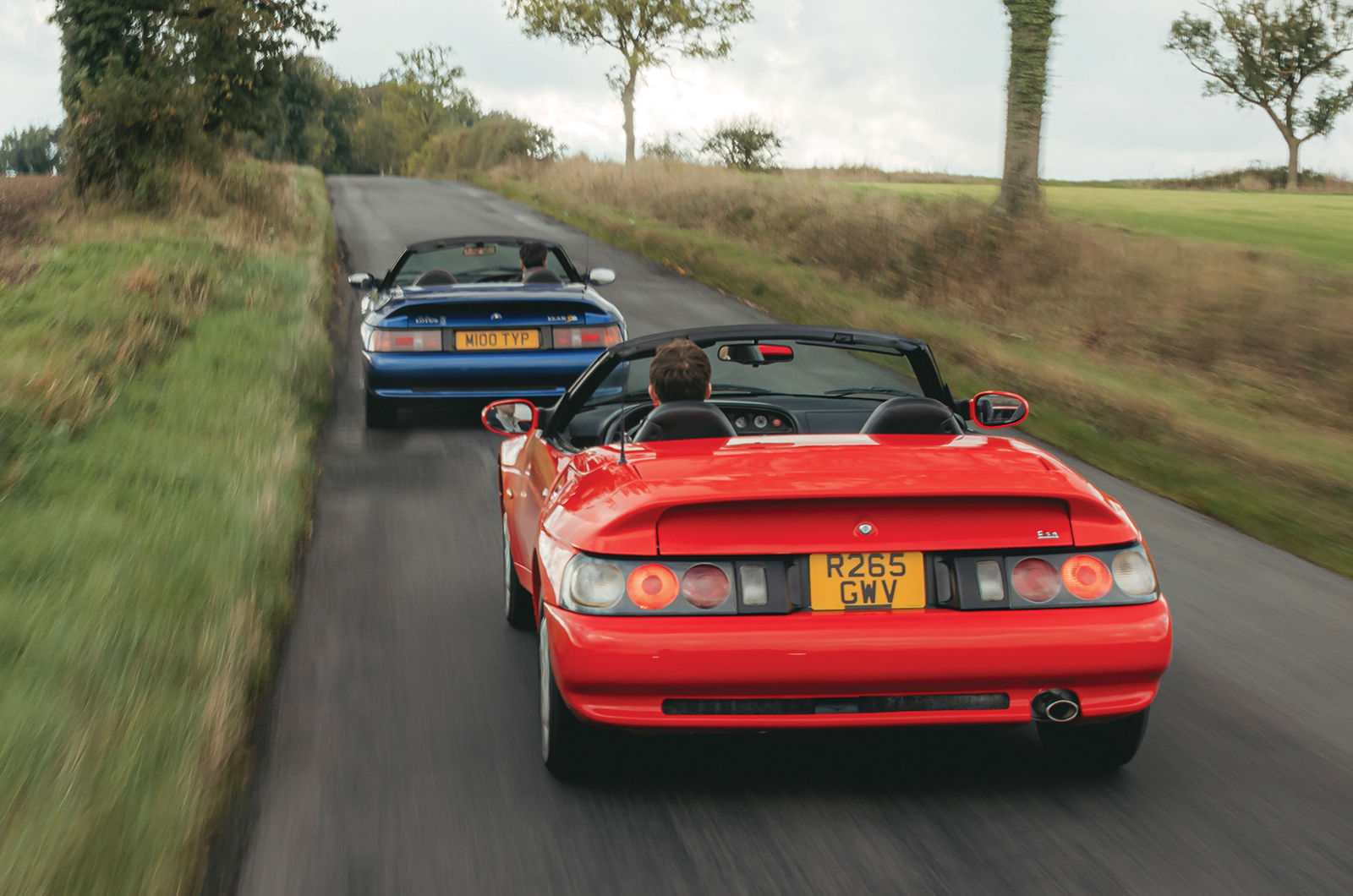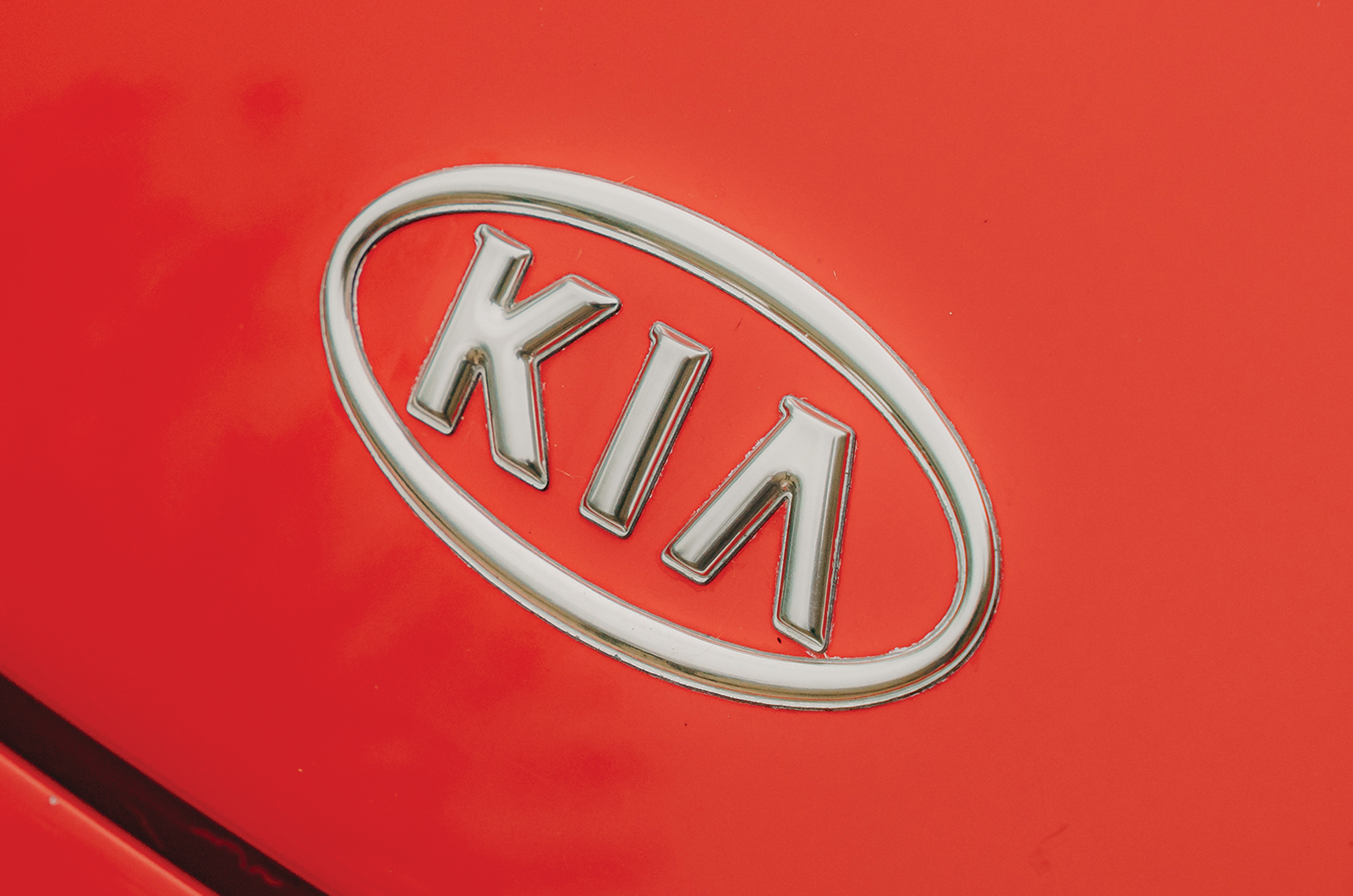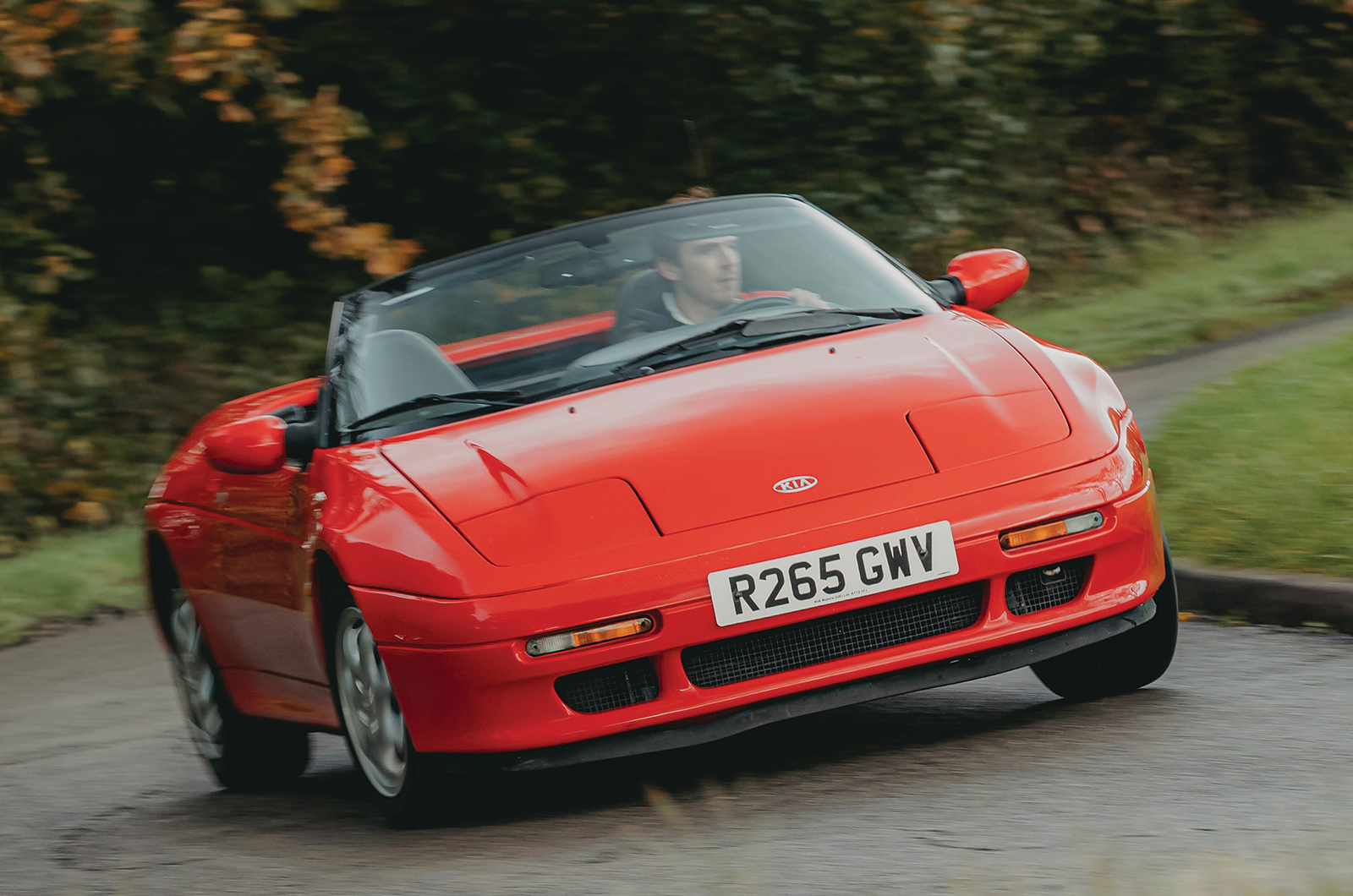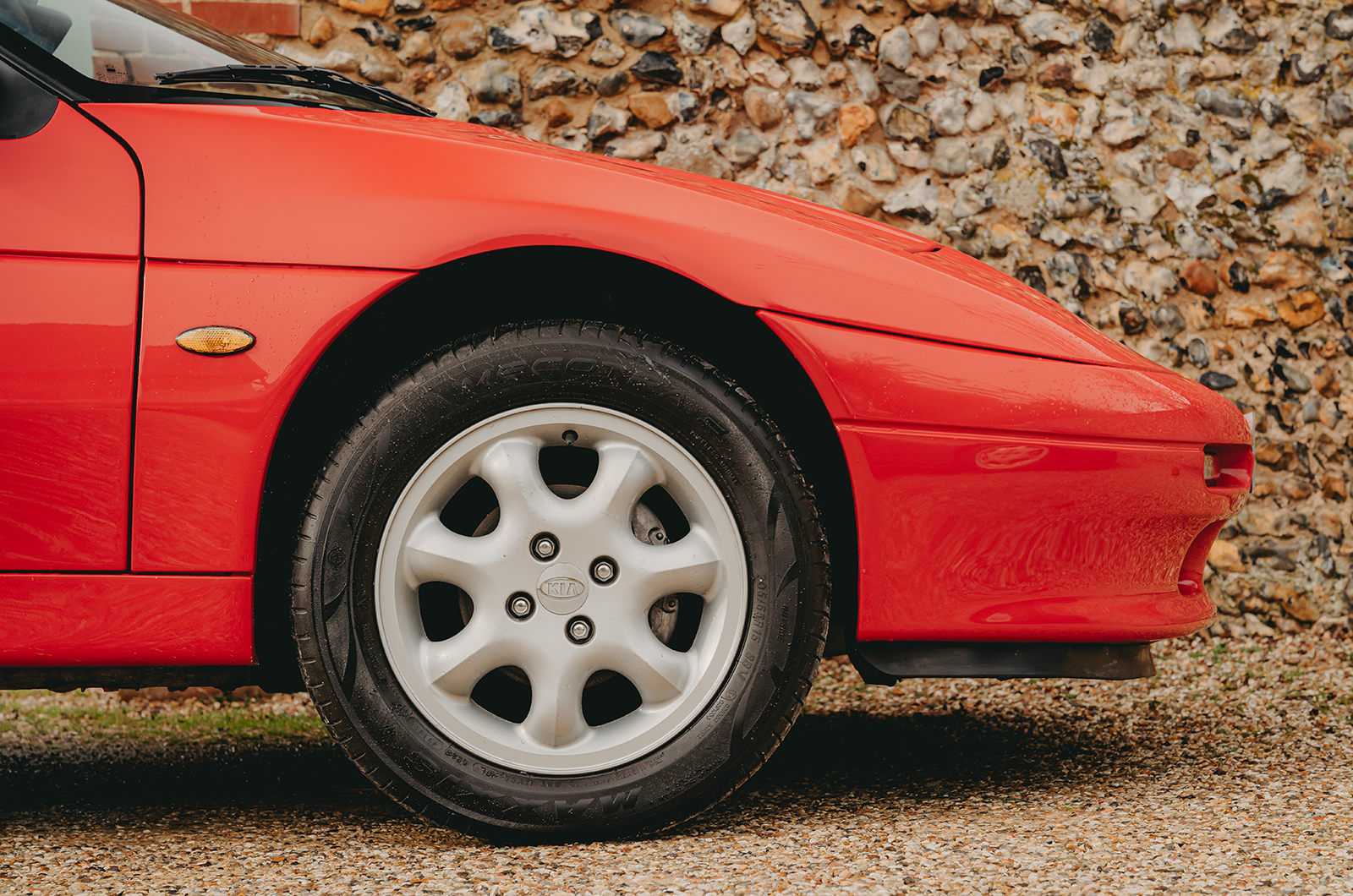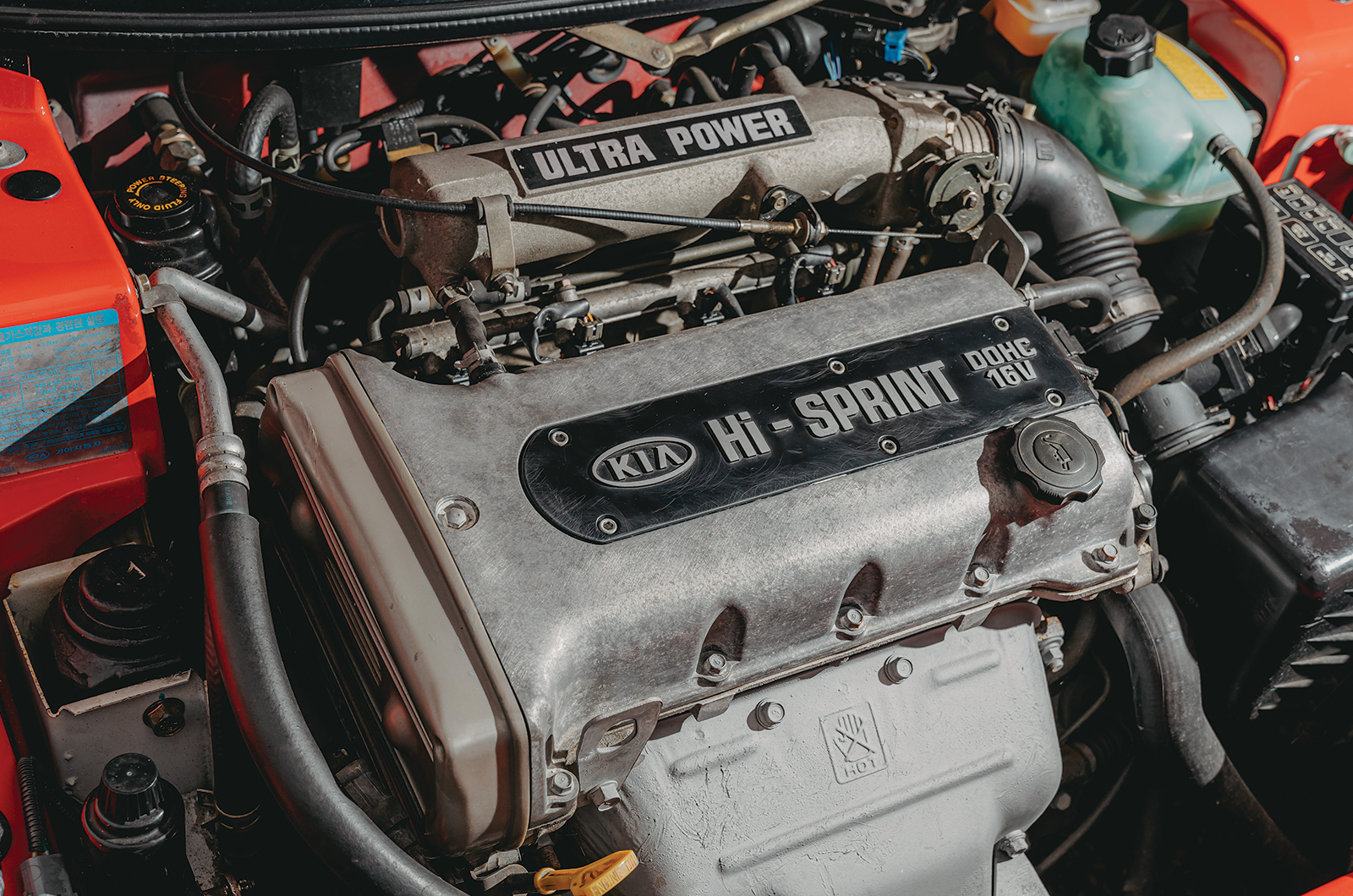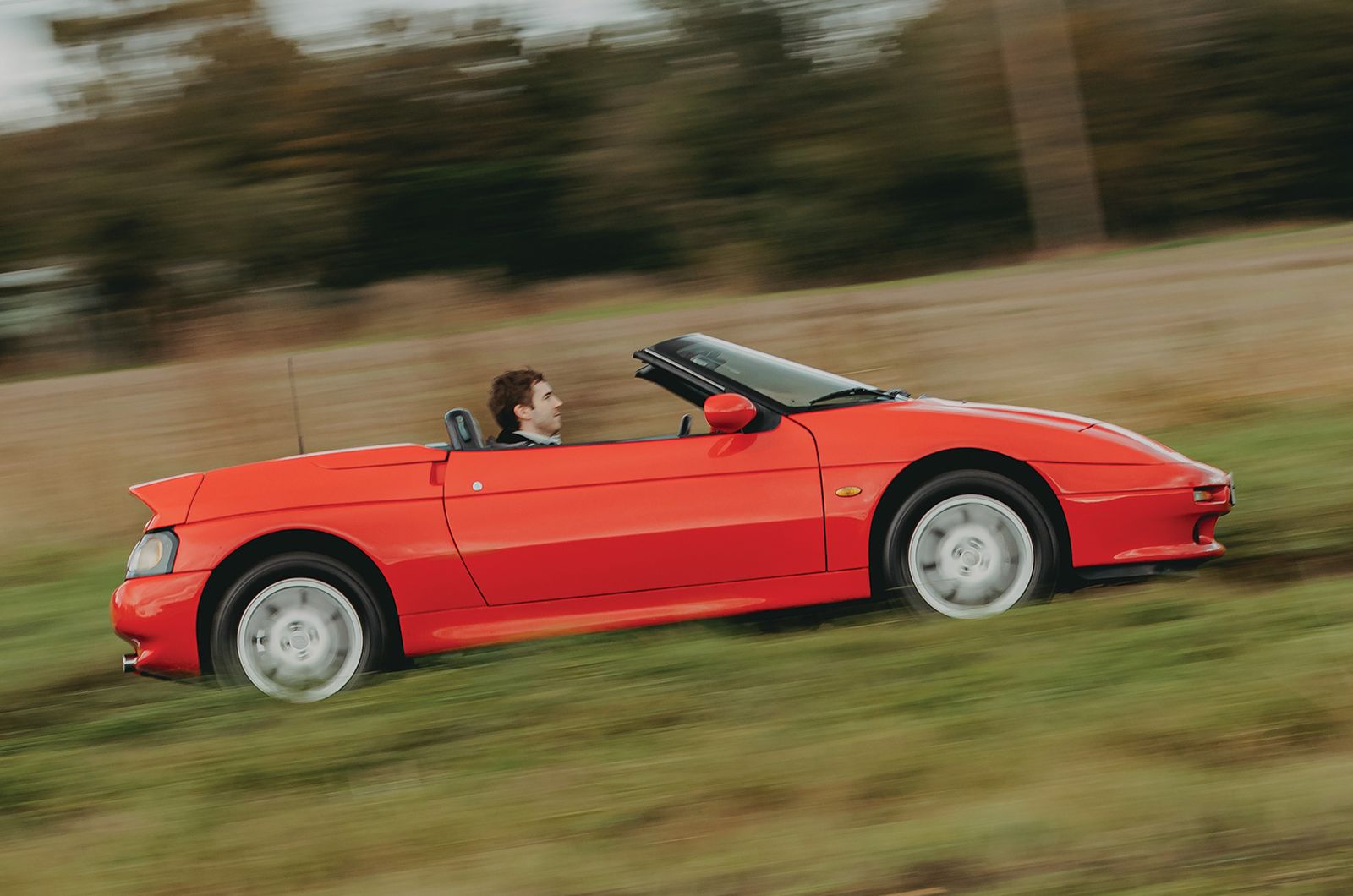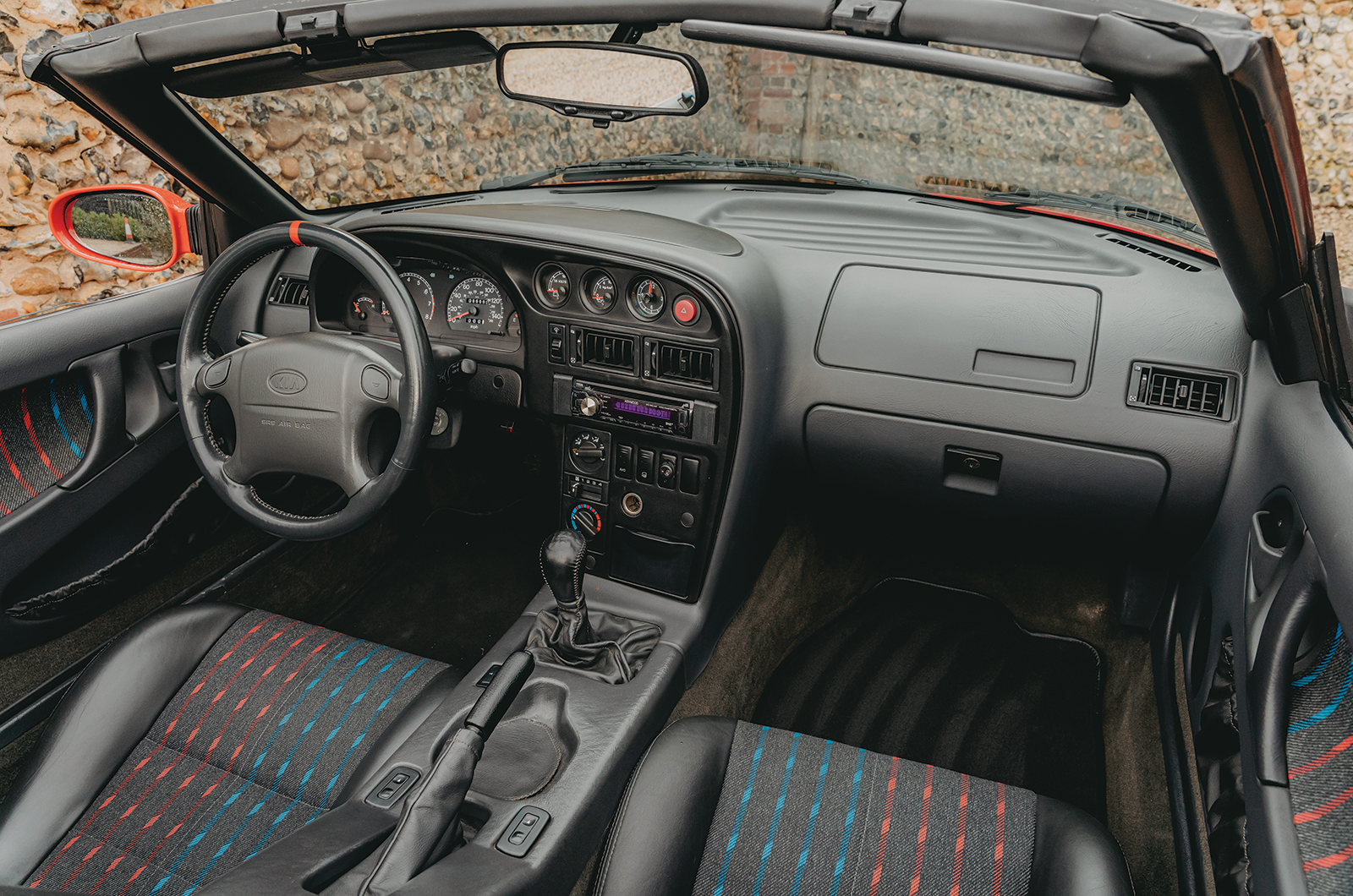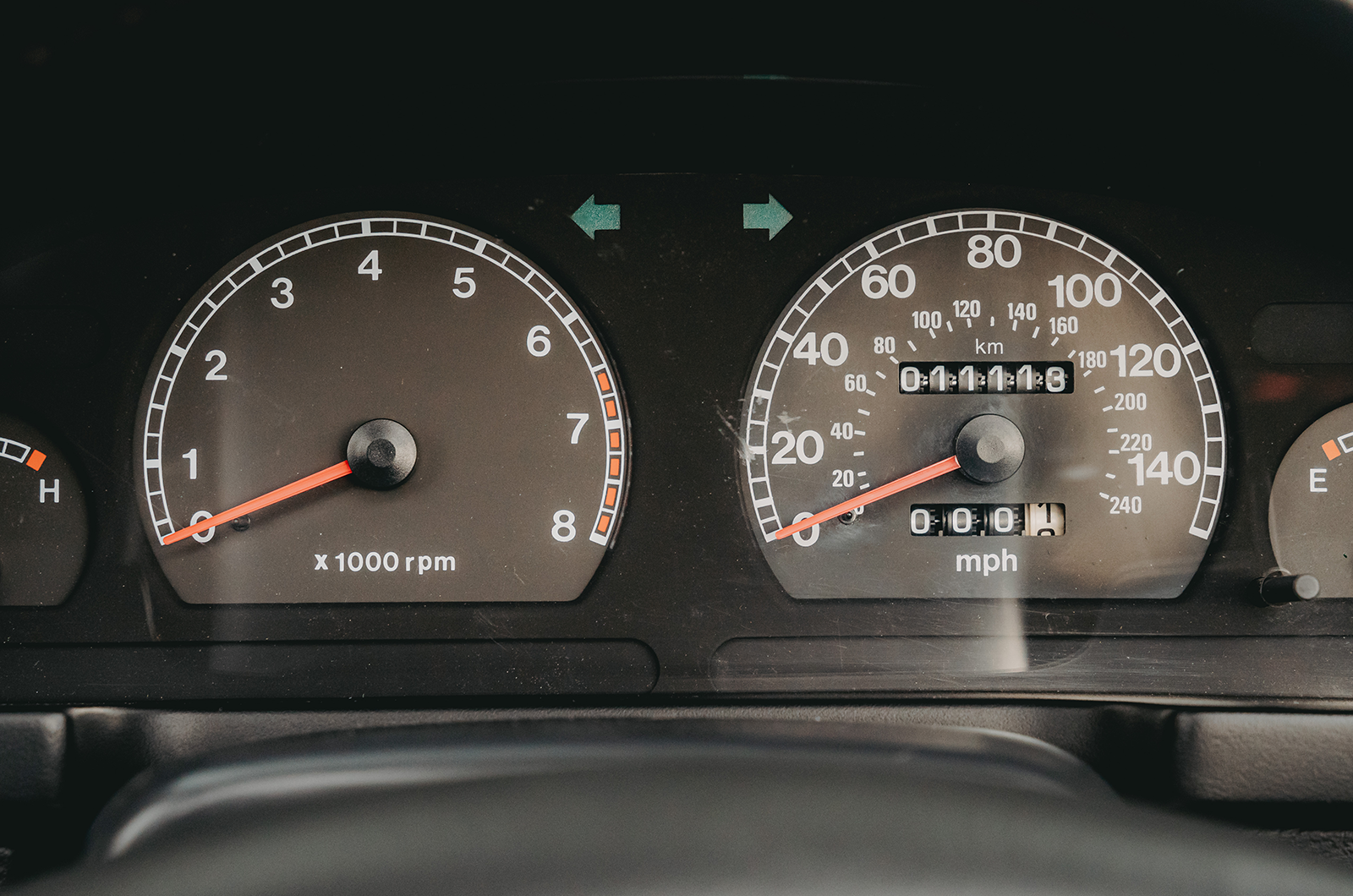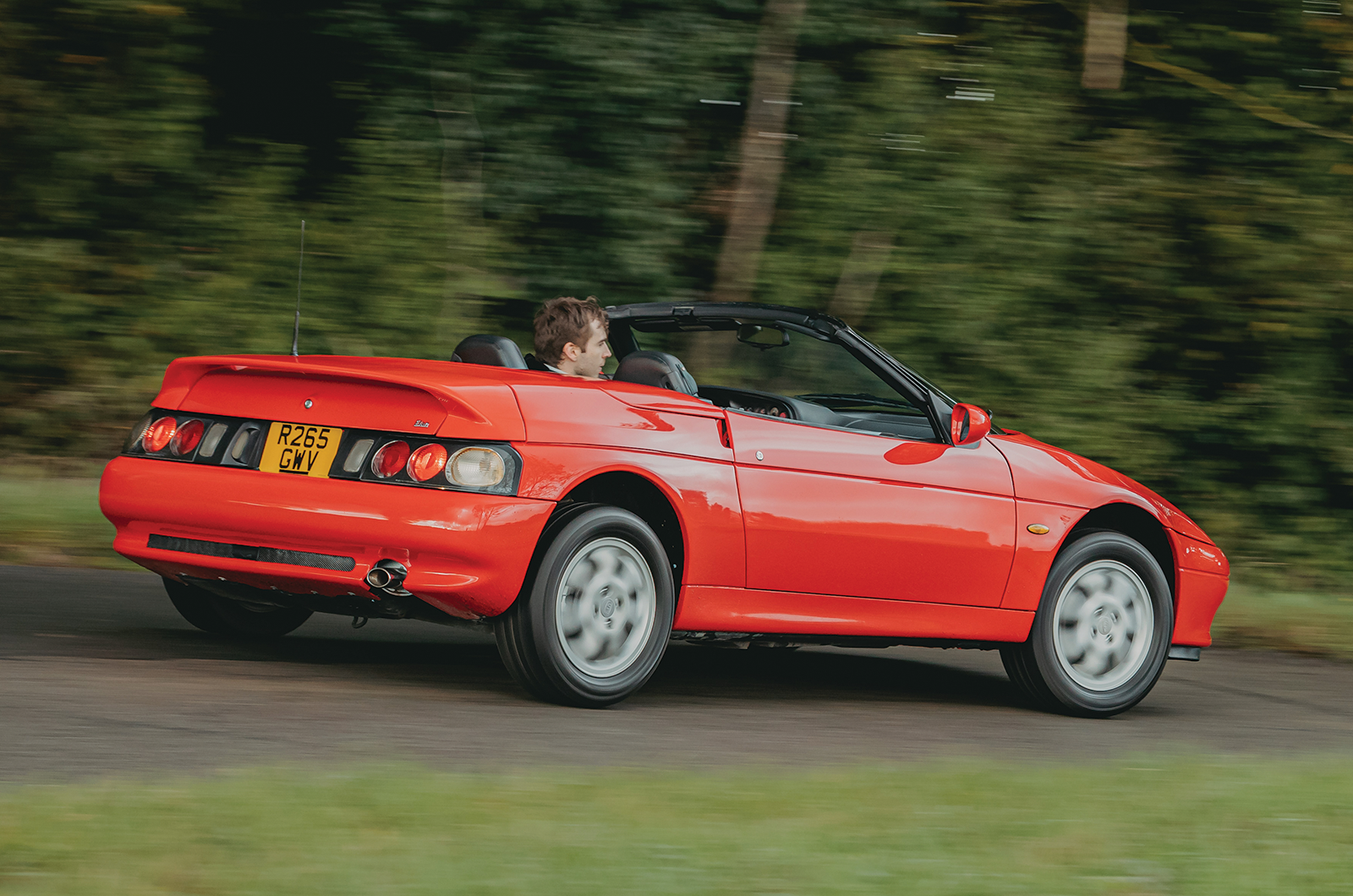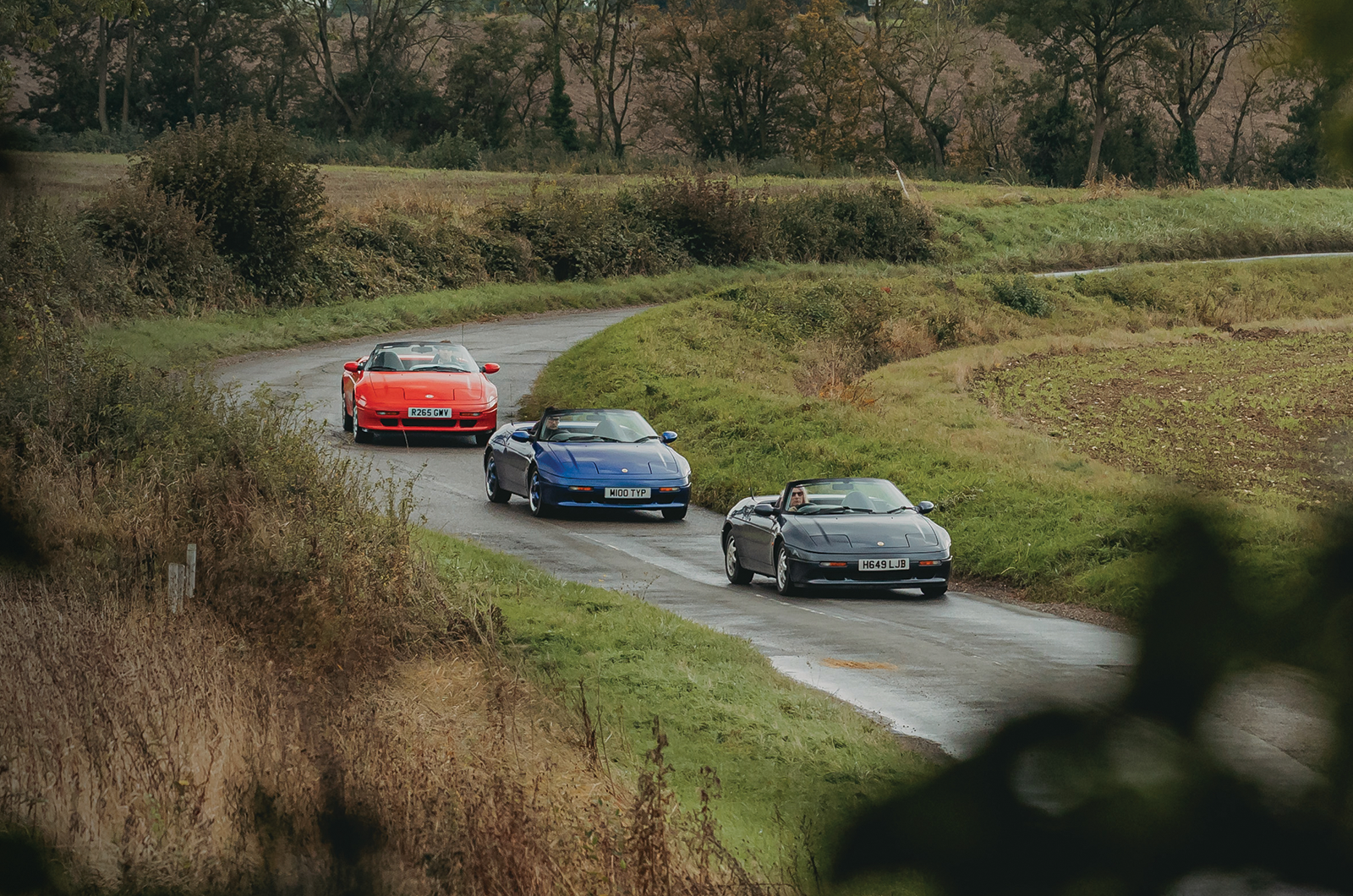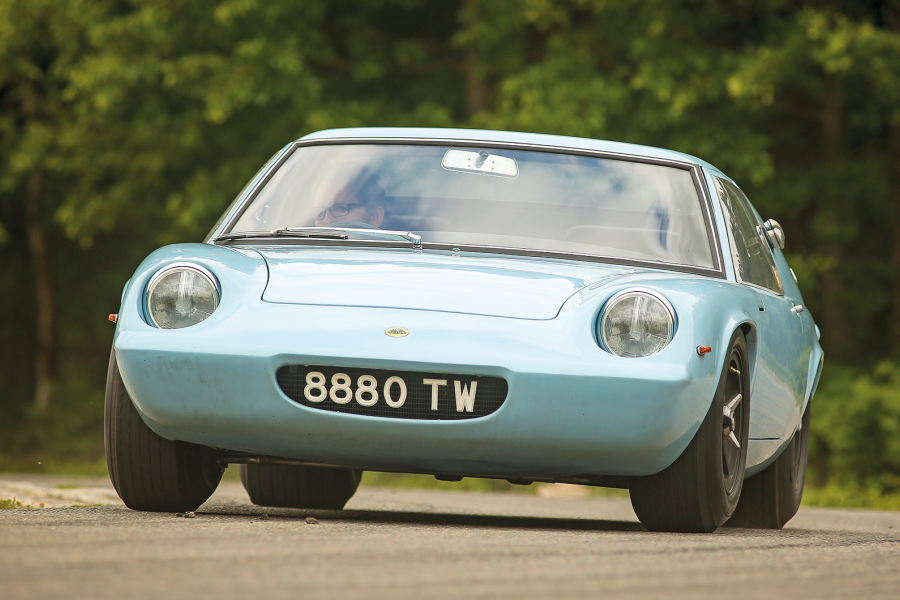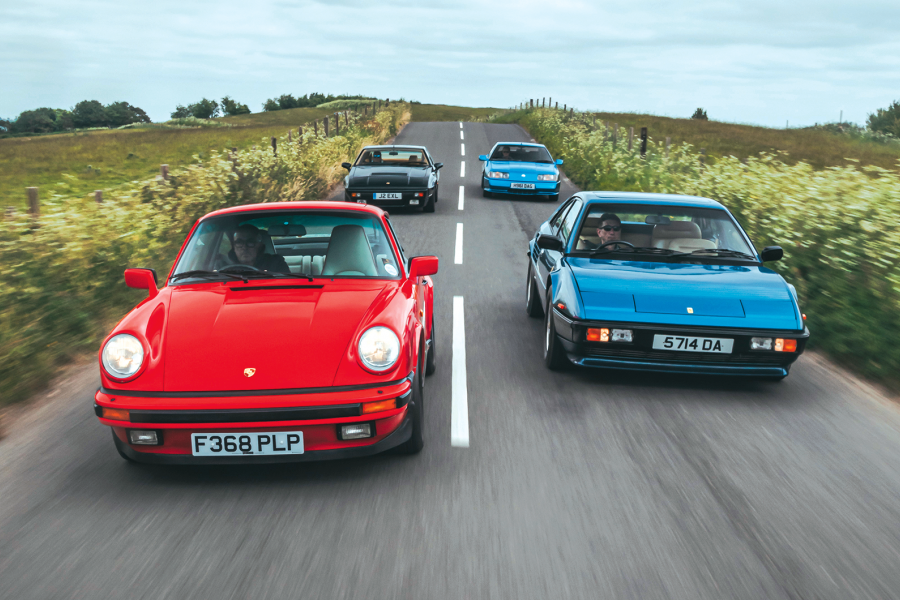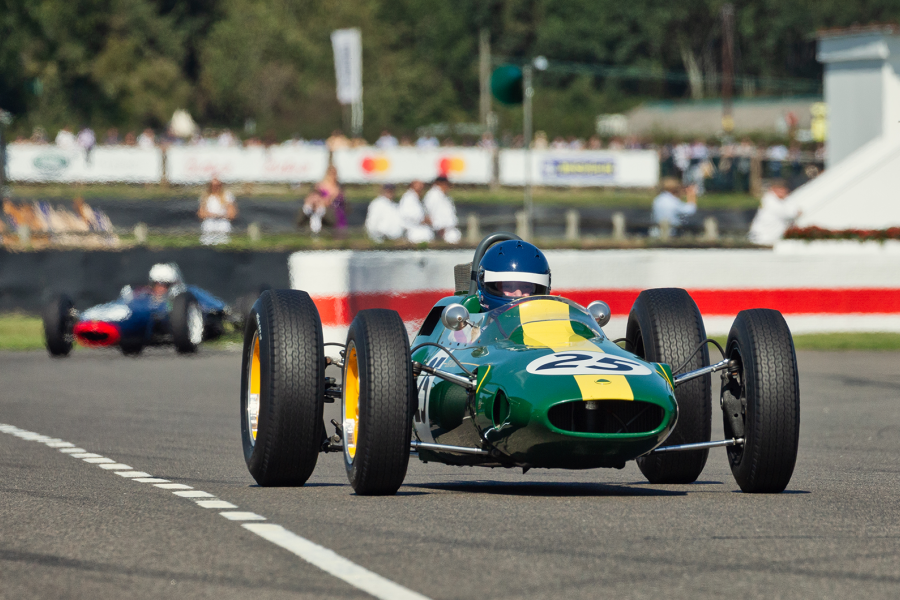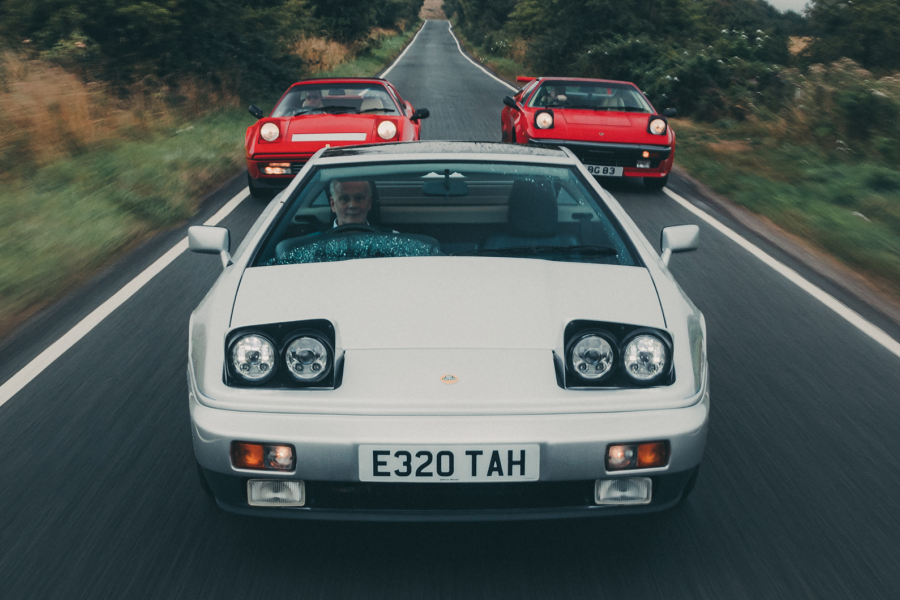Closer examination of the figures reveals that the extra restriction only cost the Isuzu unit in the very upper reaches of its rev range – torque is identical, and so is the 0-60mph time.
Justin’s S2 has covered a mere 26,000 miles, preserved to protect to its historic provenance, so the gearshift feels tight and is easy to navigate quickly, if a little longer in the throw than you might expect from a Lotus.
The brakes are strong, too, and the clutch well-weighted.
Hethel’s eagerness to make the M100 a very drivable, usable car is clear.
Kia built the Lotus Elan under licence from 1996 to 2000
Superficial though it may seem, it’s the S2’s steering wheel that is the biggest change – and improvement – over the earlier car.
Although we should note that the excellent item fitted here is a Nardi wheel that cost an extra £55.
Just that bit smaller, it better dials in the helm to what the front wheels are experiencing, and quickens the steering ratio.
The earlier car wasn’t slow to turn, but the smaller wheel gives it a touch more immediacy and playfulness where the older version could be a bit earnest.
It’s the one modification every S1 owner should try.
Despite changes, the Kia Elan remains supple and impressively grippy
For most British enthusiasts, the story ended once the stock of Isuzu engines dried up – but upstart Kia had other ideas.
The South Korean firm was no stranger to buying up old tooling and building cars under licence: its debut model in the UK was the Mazda 121-based Pride, and the marque didn’t build a car of its own design until 1992.
Its first – and so far only – sports car required an all-new drivetrain due to local content regulations, notwithstanding whether General Motors would even be willing to supply it with Isuzu engines.
Peter Stevens’ Lotus Elan design evolved little by the time it received a Kia badge
Kia chose the largest engine from its Sephia range, the 1.8-litre, twin-cam ‘BP’ – and if those initials are familiar, you’re probably a Mazda owner.
Brilliant irony, then, that a Korean-built copy of the MX-5’s engine was fitted in the new Elan.
Anyone familiar with the later, 1.8-litre MX-5 Mk1 knows the score: while a bit torquier than the 1.6, with which the Mazda made its debut, it’s still an engine that requires real revving in order to extract its performance.
It’s a thrilling-sounding unit, however, that audibly encourages you to hold on to each gear.
The Kia Elan’s 1.8-litre engine is a Korean-made copy of Mazda’s BP-series unit
The gearing is tall in its lower ratios – a hangover from the Sephia-sourced transmission – but once you have negotiated that foible, it gives a thoroughly entertaining drive.
This 1997 example is from Kia UK’s heritage fleet and remains one of the few ever delivered to Britain.
Kept by a Kia dealer, presumably looking to show customers that this new marque they hadn’t heard of was capable of providing a bit of excitement, this Elan has led a pampered life, covering just 11,000 miles despite a period in private ownership.
Virtually all Kia Elans, however, were sold in Korea or Japan, and all were left-hand drive.
Kia was able to sell the Elan for much less than Lotus did
The interior is a mish-mash of the original Lotus with Kia additions.
The digital clock is gone, while much of the switchgear is different.
The upholstery, leather in both Lotus models, is a typically mid-’90s cloth weave here.
More substantially, the delightful, small-diameter, optional steering wheel of ‘our’ S2 is gone, replaced by an off-the-shelf, airbag-equipped wheel that is too big for the car.
The Kia Elan has a cloth trim and an unsporty steering wheel
For all that, and despite a 40mm rise in the ride height, the Kia retains the brilliance of the Lotus chassis: its ride is supple, its front-end grip steadfast.
There was serious enough ambition to bring it to the UK for Autocar to test one in 1996, but Kia’s bankruptcy the following year ended the idea.
Had it done so, however, perhaps it would have been the final making of the M100.
The Kia Elan’s interior is a mash-up of Lotus bits with Korean additions
Not only was Kia able to make the car far cheaper (£23,000 in 1996, to the inflation-adjusted Lotus at £26,150), but it would also have escaped the expectations, and restrictions, of being a Lotus.
It’s not that the M100 doesn’t deserve the badge, but perhaps it wasn’t quite what Lotus buyers were looking for.
Speaking to Road & Track in 1990, chassis engineer Robert Becker explained he’d signed off the Elan so that 90% of drivers could access 90% of the performance, 90% of the time.
He concluded: “It’ll make it easy for [the driver] to enjoy what they’ve got.”
The Kia Elan rides 40mm higher than the Lotus models
Yet the customers willing to spend over the odds, travel to far-away dealerships and put their trust in a niche player were that remaining 10%.
Lotus had built the car that General Motors should have been building itself.
The Elan proved, however, that Lotus had cracked the performance front-wheel-drive nut.
As a consultancy showpiece it excelled, and if you’re a fan of hot-hatch handling, you have to give the M100 a go.
Had it been built with a roof and a hatch, it would knock storied names aside as one of the best of all time.
It remains – as it has been for the past 20 years – one of the great sports-car bargains.
Images: Max Edleston
Factfiles
Lotus Elan SE
- Sold/number built 1989-’92/3855
- Construction steel backbone chassis, glassfibre body
- Engine iron-block, alloy-head, dohc, 16-valve 1588cc ‘four’, turbocharger and electronic multi-point injection
- Max power 163bhp @ 6600rpm
- Max torque 147lb ft @ 4200rpm
- Transmission five-speed manual, FWD
- Suspension independent, at front by unequal-length wishbones rear upper links, wide-based lower wishbones; coil springs, anti-roll bar, tubular dampers f/r
- Steering power-assisted rack and pinion
- Brakes vented front, solid rear discs, with servo
- Length 12ft 6in (3802mm)
- Width 5ft 8in (1735mm)
- Height 4ft (1229mm)
- Wheelbase 7ft 6in (2250mm)
- Weight 2249lb (1020kg)
- 0-60mph 6.7 secs
- Top speed 137mph
- Mpg 32
- Price new £19,850 (1989)
- Price now £6-15,000*
Lotus Elan S2
(where different from SE)
- Sold/number built 1994-’95/800
- Max power 153bhp @ 6000rpm
- Max torque 146lb ft @ 4200rpm
- Top speed 133mph
- Mpg 33
- Price new £24,500 (1994)
Kia Elan
(where different from SE)
- Sold/number built 1996-2000/792
- Engine iron-block, alloy-head, dohc, 16-valve 1793cc ‘four’, electronic multi-point injection
- Max power 135bhp @ 6250rpm
- Max torque 114lb ft @ 5500rpm
- Brakes with anti-lock
- Weight 2359lb (1070kg)
- 0-60mph 7.4 secs
- Price new £23,000 (1996)
*Prices correct at date of original publication
Enjoy more of the world’s best classic car content every month when you subscribe to C&SC – get our latest deals here
READ MORE
Daring to be different: Lotus Elan M100 vs BMW Z1
Falling for a Lotus Elan M100
Future classic: Kia Stinger GT S
Buyer’s guide: Mazda MX-5 (NA)
Charlie Calderwood
Charlie Calderwood is Classic & Sports Car’s Features Editor
